- Lusty petrol engine gives Amarok hot hatch performance
- Excellent car-like ride and handling balance
- Best-in-class refinement and quality
- Petrol engine can be thirsty
- Ride not as plush as related Ranger
- Some functions - like the AC - take too many button presses
The Volkswagen Amarok has long been one of the best utes you could buy. Even towards the end of its lifecycle in Australia, the previous generation’s combination of a punchy V6 turbo-diesel engine, a classy cabin and excellent road manners mean that a second-generation was always going to be tough to recreate. Now involved with technical partner Ford, the ‘NF’ series Amarok appears to have what it takes to win the ute talent crown: more technology and safety kit than before, a wider range of powerplants and imposing styling. But will it? We tested the 2023 Volkswagen Amarok Aventura TSI452 to find out see whether the Amarok has what it takes to lead the class.
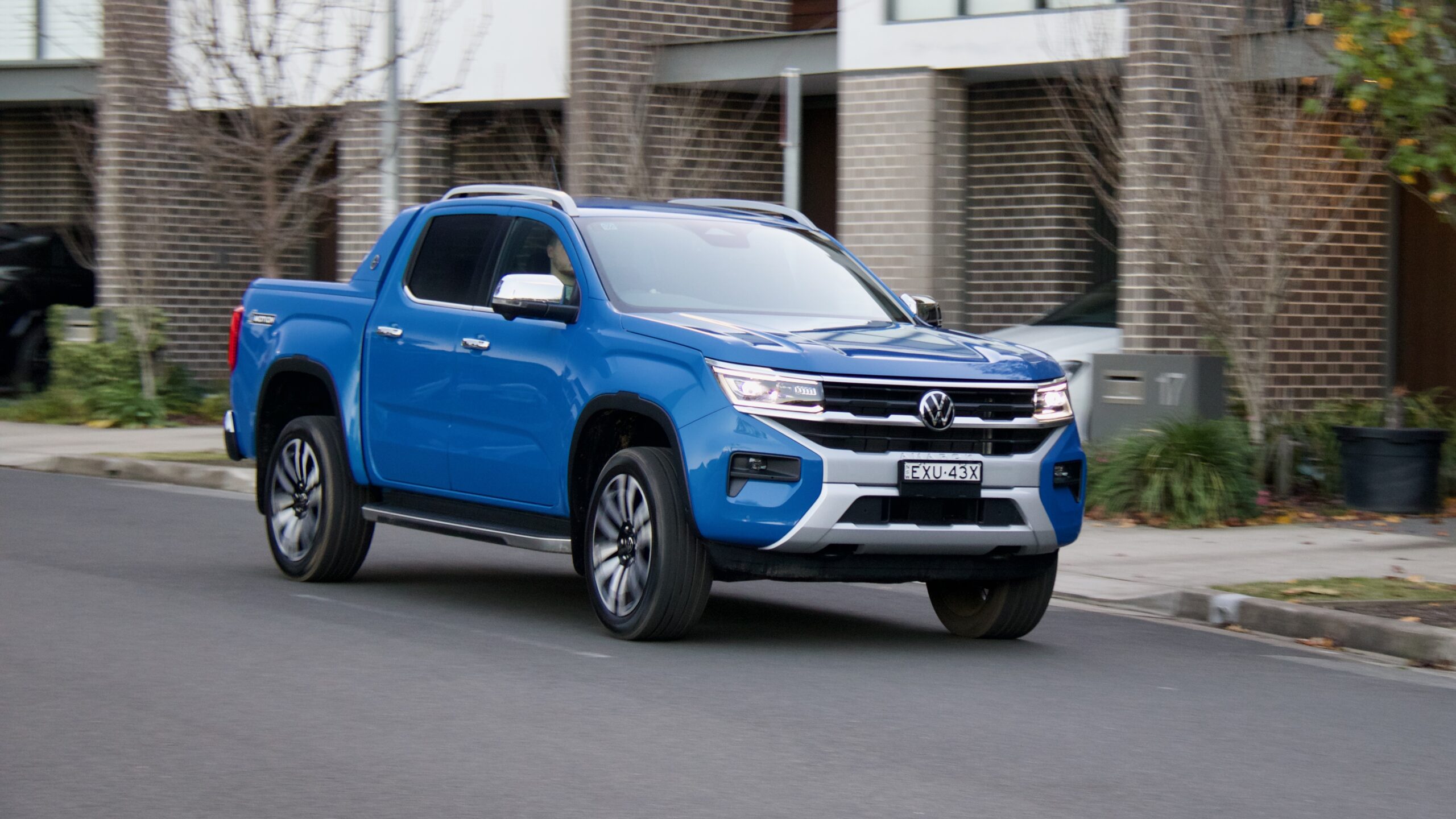
Using the same ‘T6.1’ platform as the Ranger, the second-gen Amarok has grown in size compared to the old model – it’s 96mm longer overall, for example. But while there are clear similarities in the Ranger and Amarok’s styling, the Ford and Volkswagen partnership has allowed for each manufacturer to make their ute feel bespoke and in line with their brand. The Ranger and Amarok cabins look quite different, there are meaningful chassis tuning differences, and the Amarok’s in-car tech has a decidedly Volkswagen look and feel to it. Plus, for Australians, the Ranger and Amarok are made in different places – Thailand supplies our Rangers and South Africa supplies the Amarok.
Price & Equipment: 7.5/10
Pricing for the 2023 Volkswagen Amarok range starts at $50,990 plus on-road costs for the entry-level Core and extends to $79,990 +ORC (around $88,000 drive away) for the top-spec Aventura – that’s with either a 3.0-litre V6 turbo-diesel or the 2.3-litre four-cylinder turbo-petrol tested here.
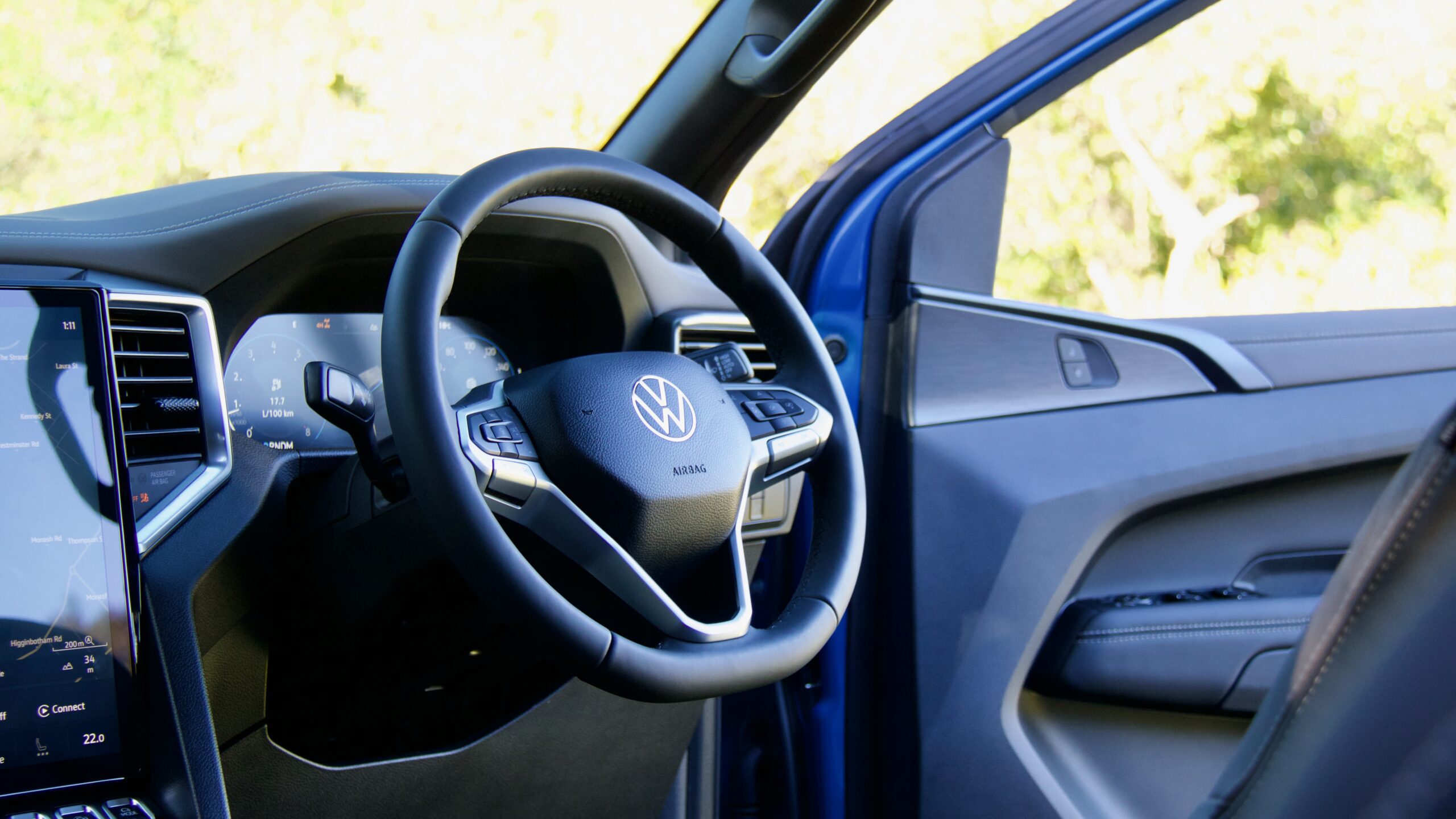
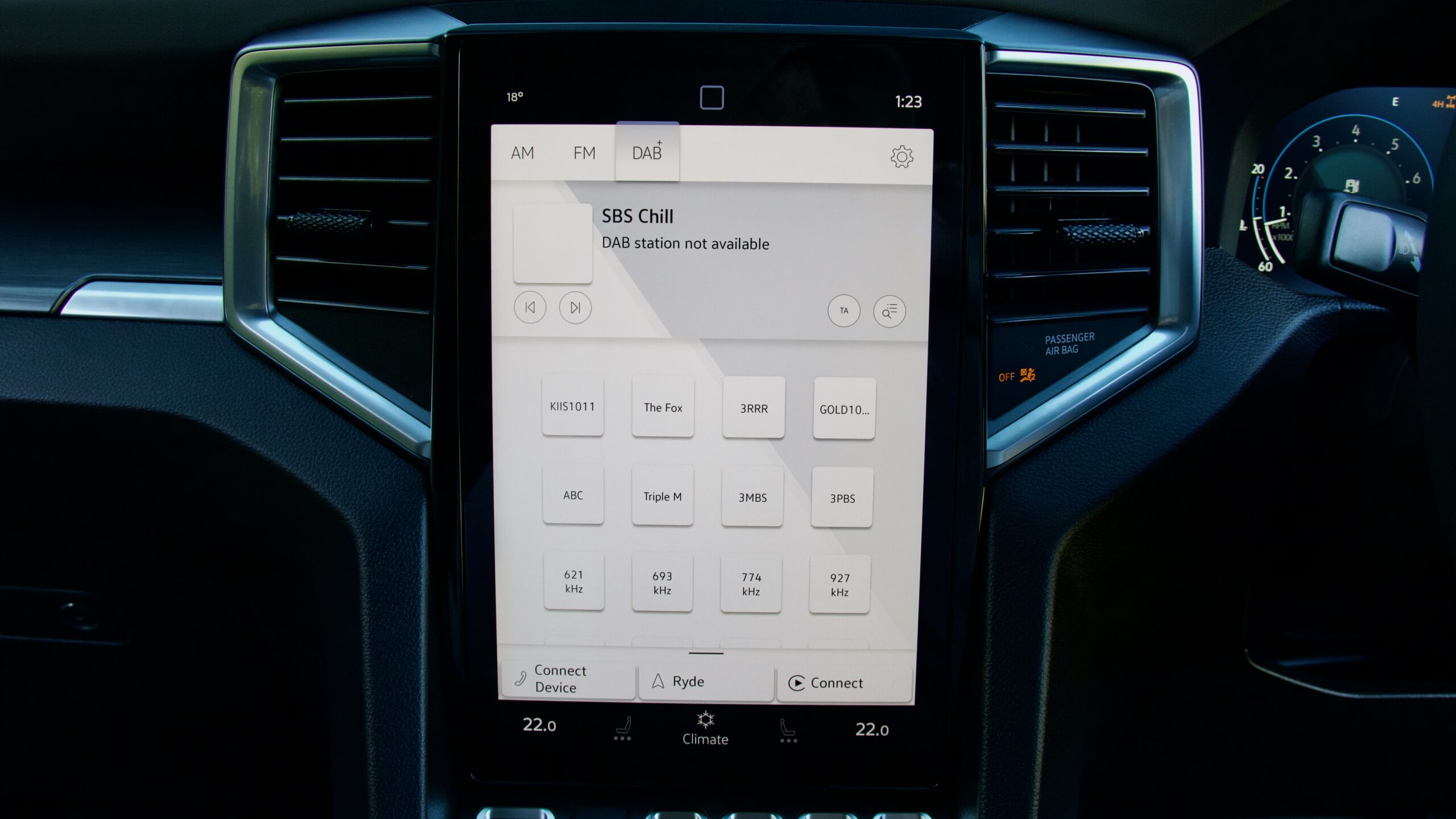
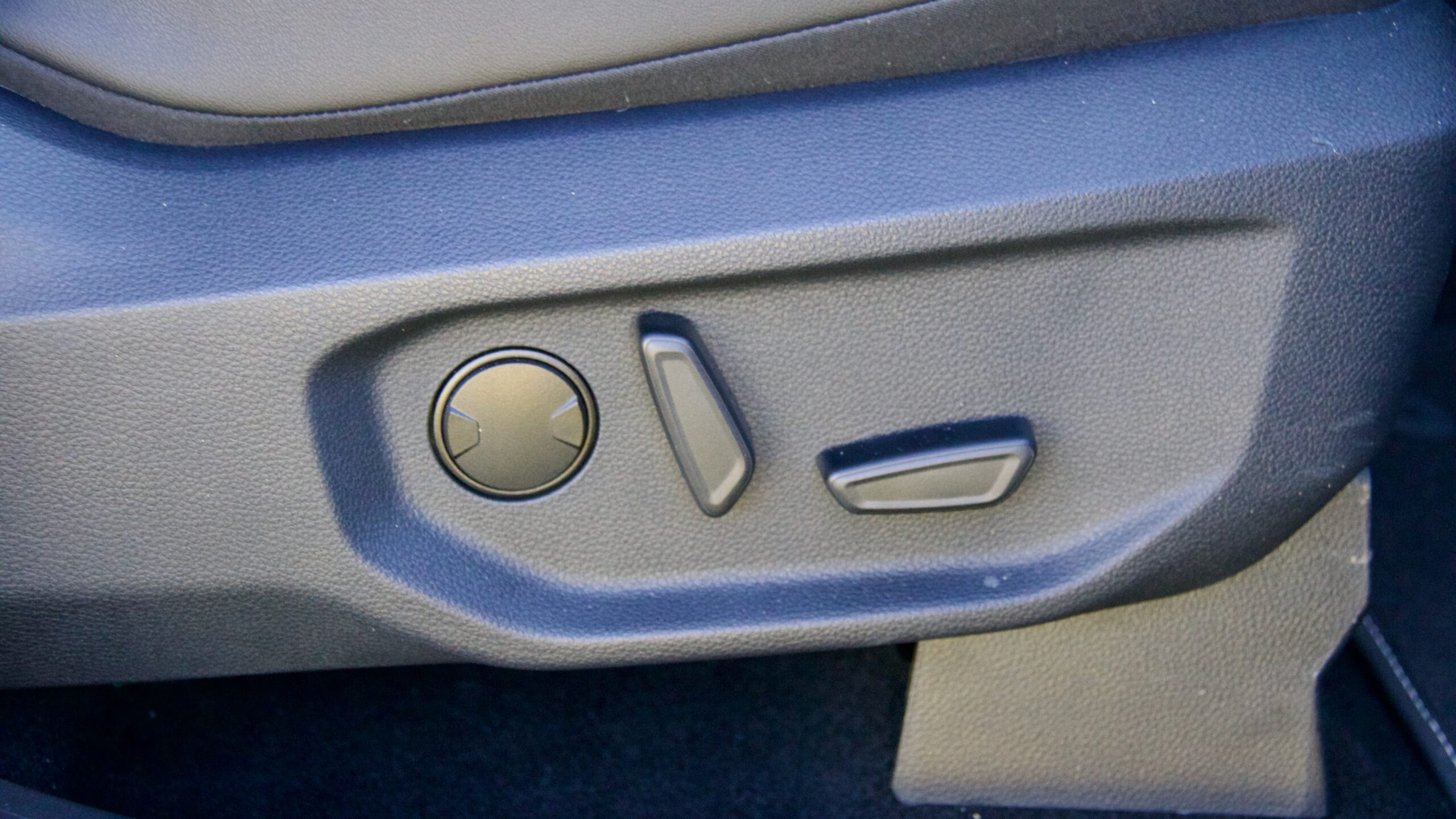
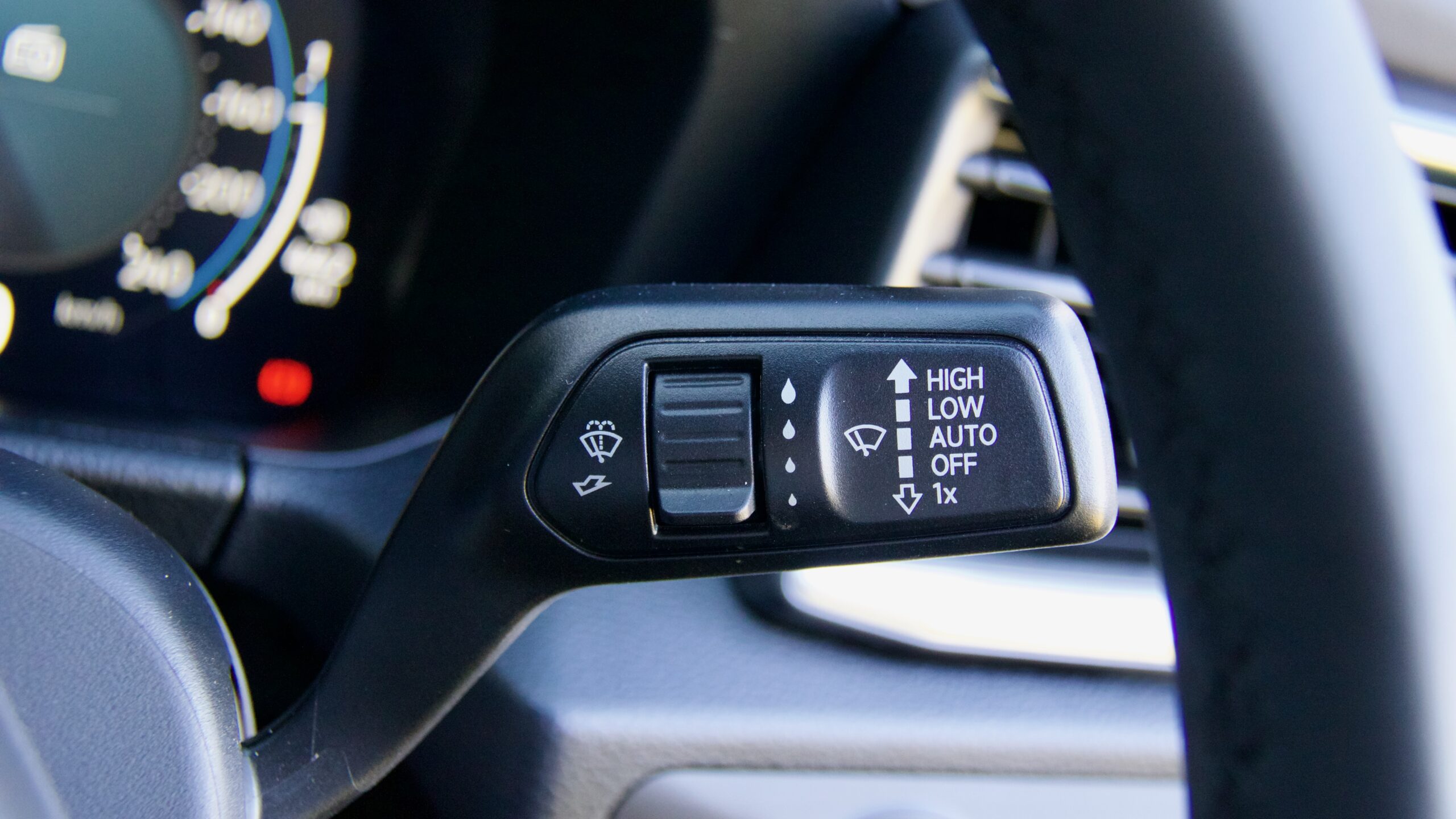
Standard equipment on the Amarok Aventura includes 21-inch alloy wheels with a full-size alloy spare, roof rails, rear privacy glass, chrome exterior highlighting, dusk- and rain-sensing automatic all-LED lighting, auto wipers, keyless entry and start, heated and auto-folding mirrors with puddle lamps, multiple driving modes, ‘Savona’ leather upholstery on the seats, dashboard and front door tops, heated and 10-way electrically adjustable front seats, dual-zone climate control with rear air vents, ambient lighting, a leather steering wheel and gear knob, a 12-inch touchscreen with wireless Apple CarPlay and Android Auto, satellite navigation, digital radio, a 12.3-inch digital driver’s display, an eight-speaker Harman Kardon sound system, a wireless phone charger, two front USB ports, carpet floor mats, a remote-controlled electric roller shutter, a plastic tub liner and a tow bar kit (the brake controller is optional).
Safety kit includes nine airbags, auto emergency braking (AEB) with pedestrian and cyclist detection, lane keep assist with lane departure warning, blind-spot monitoring with rear cross-traffic alert, Matrix adaptive high beam functionality for the headlights, adaptive cruise control, speed sign recognition, an alarm, automatic emergency calling when a phone is connected, an intelligent speed limiter, automatic parking, low-speed automatic braking in reverse, front and rear parking sensors and a 360-degree parking camera. The Amarok range received a five-star ANCAP safety rating based on testing in 2022.
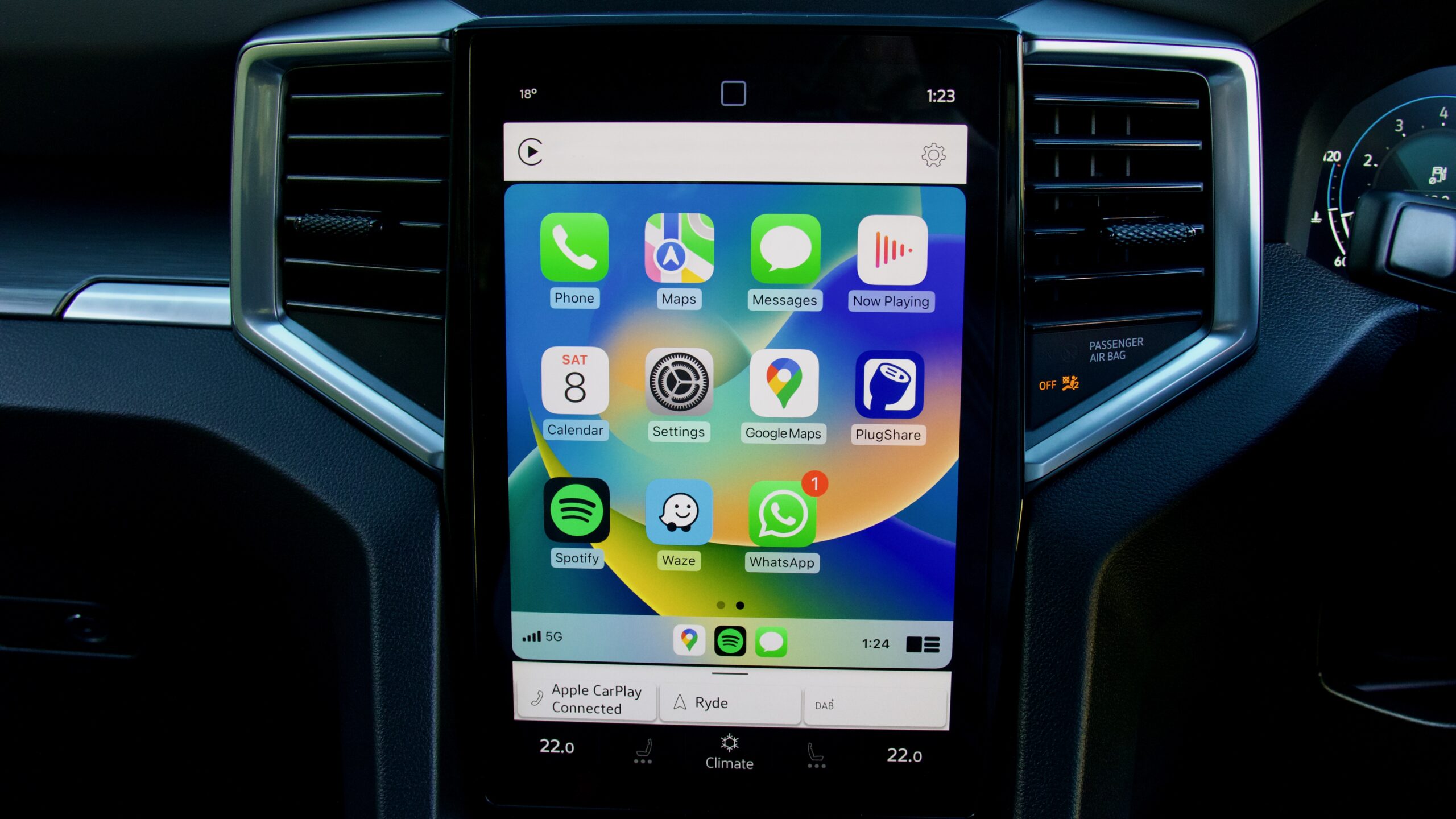
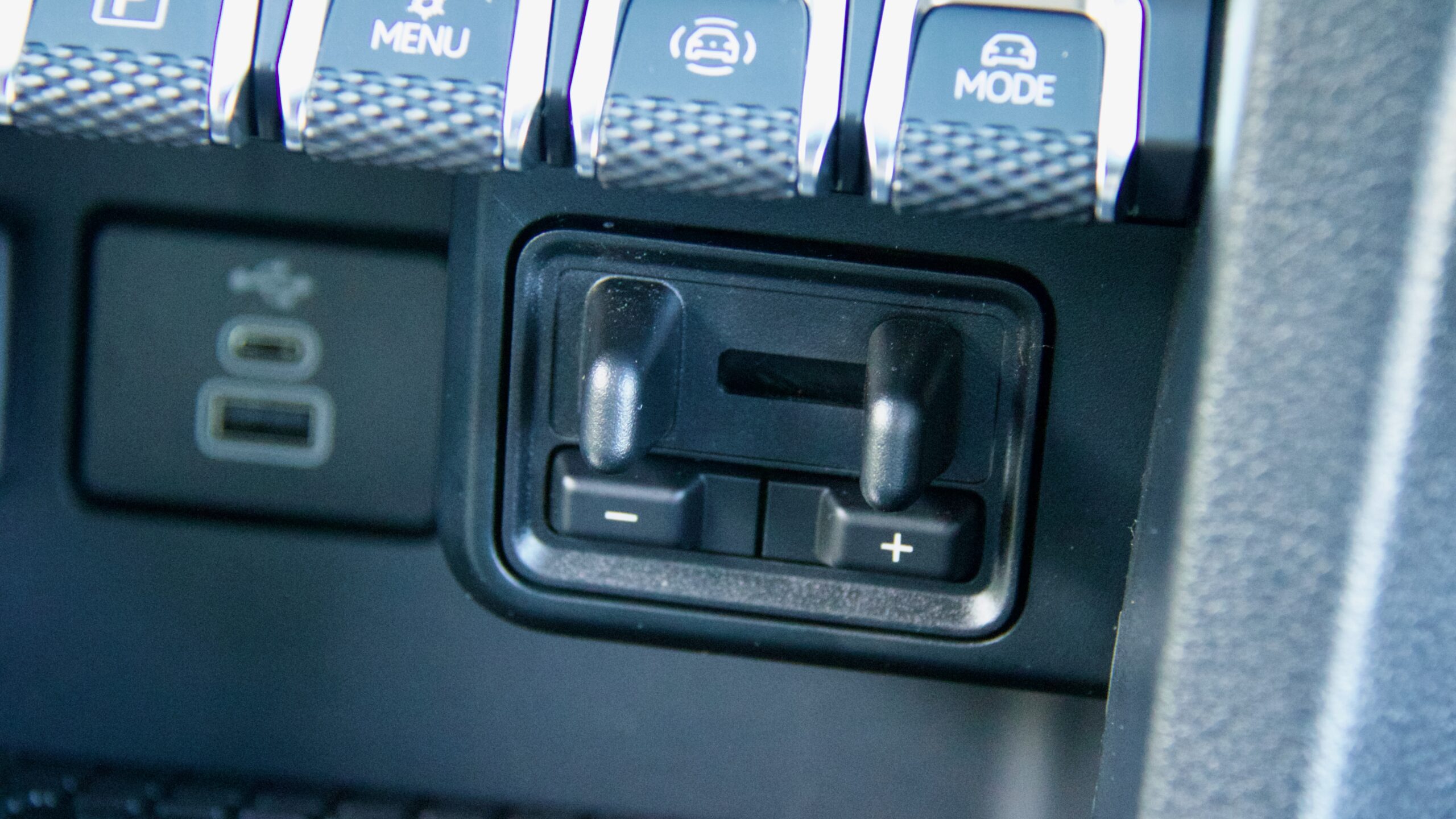
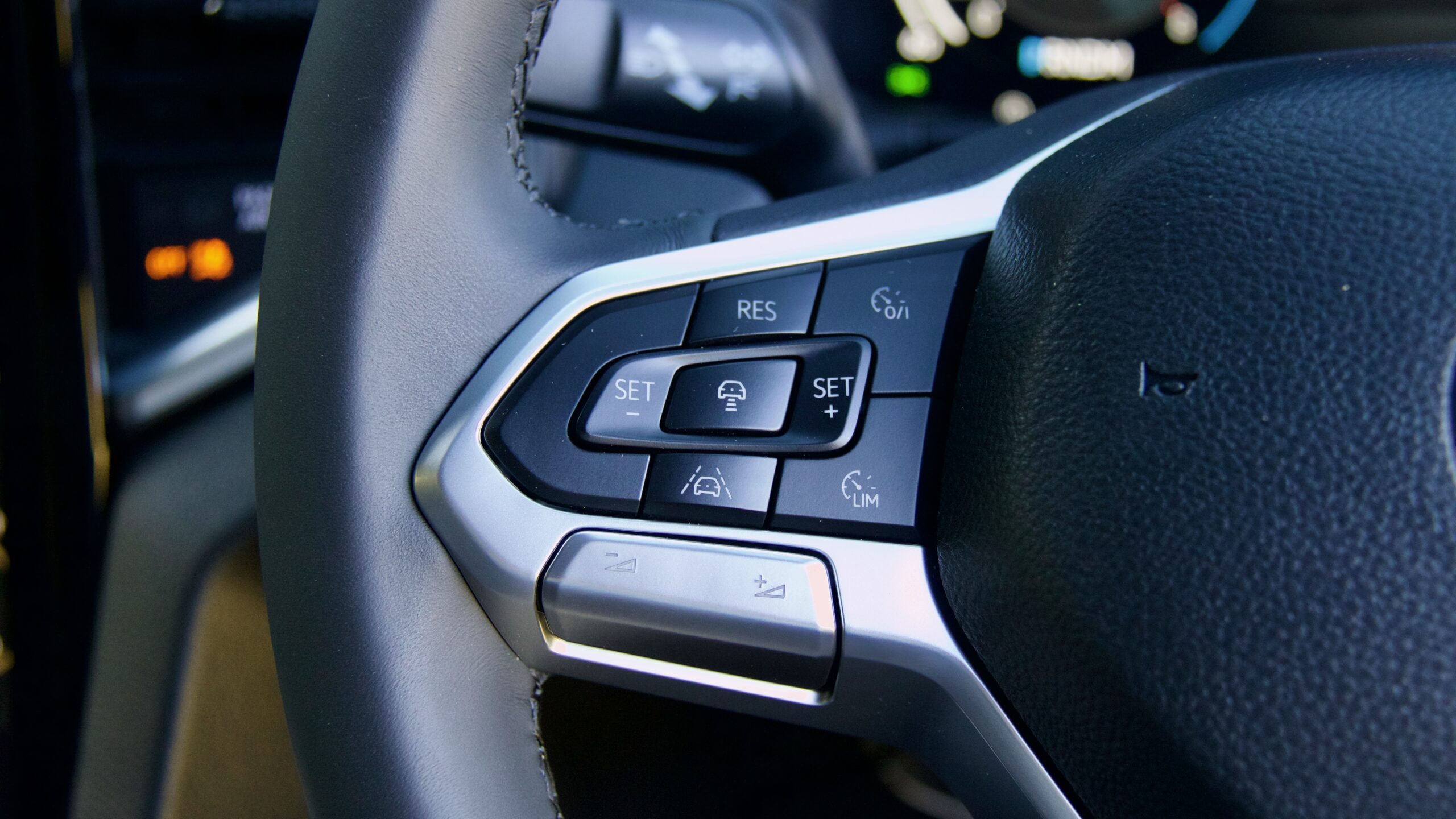
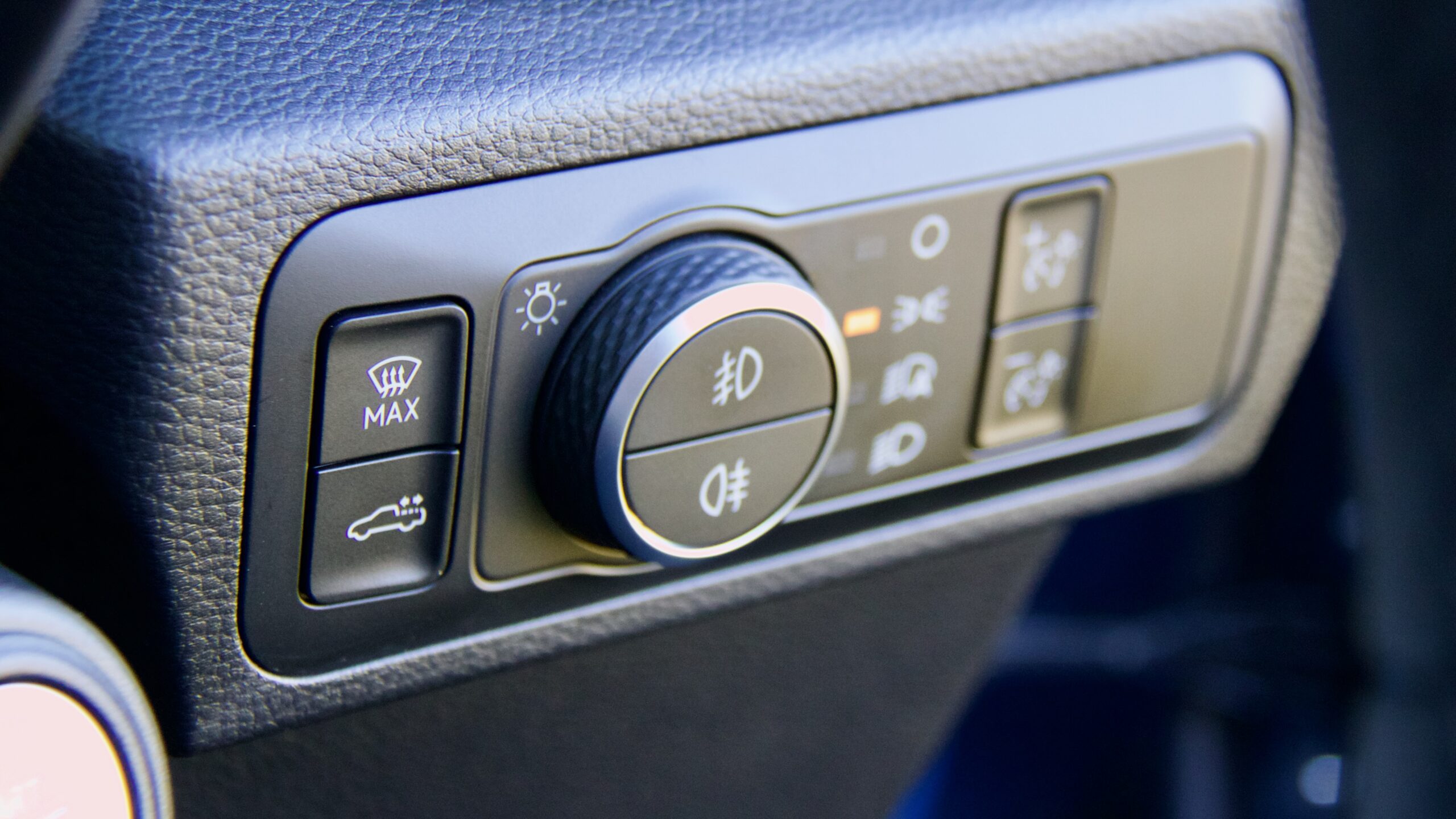
Colour options for the Amarok Aventura include the no-cost ‘Clear White’, as well as the $990-extra ‘Light Grey’, ‘Deep Red’, ‘Dark Grey’, ‘Bright Beige’, ‘Midnight Black’, ‘Bright Blue’ and our test car’s ‘Mid Blue’. Black leather with dark brown highlights is the only interior option for the Amarok Aventura. There are no other options for the Amarok Aventura, but there are over 40 different dealer-fit accessories available.
While there’s a huge amount of choice in the ute market – including the Isuzu D-Max, Mazda BT-50, Nissan Navara, Mitsubishi Triton, SsangYong Musso, Jeep Gladiator, Toyota HiLux and aforementioned Ford Ranger – the petrol-powered Amarok has no direct competition. But if you’re after a ute and aren’t bothered by fuel choice, the Ford Ranger Wildtrak V6 diesel (from around $82,000 drive away once the larger 20-inch wheel and Premium Pack are optioned, to better match the Amarok Aventura) and Mazda BT-50 SP (around $75,000 drive away).
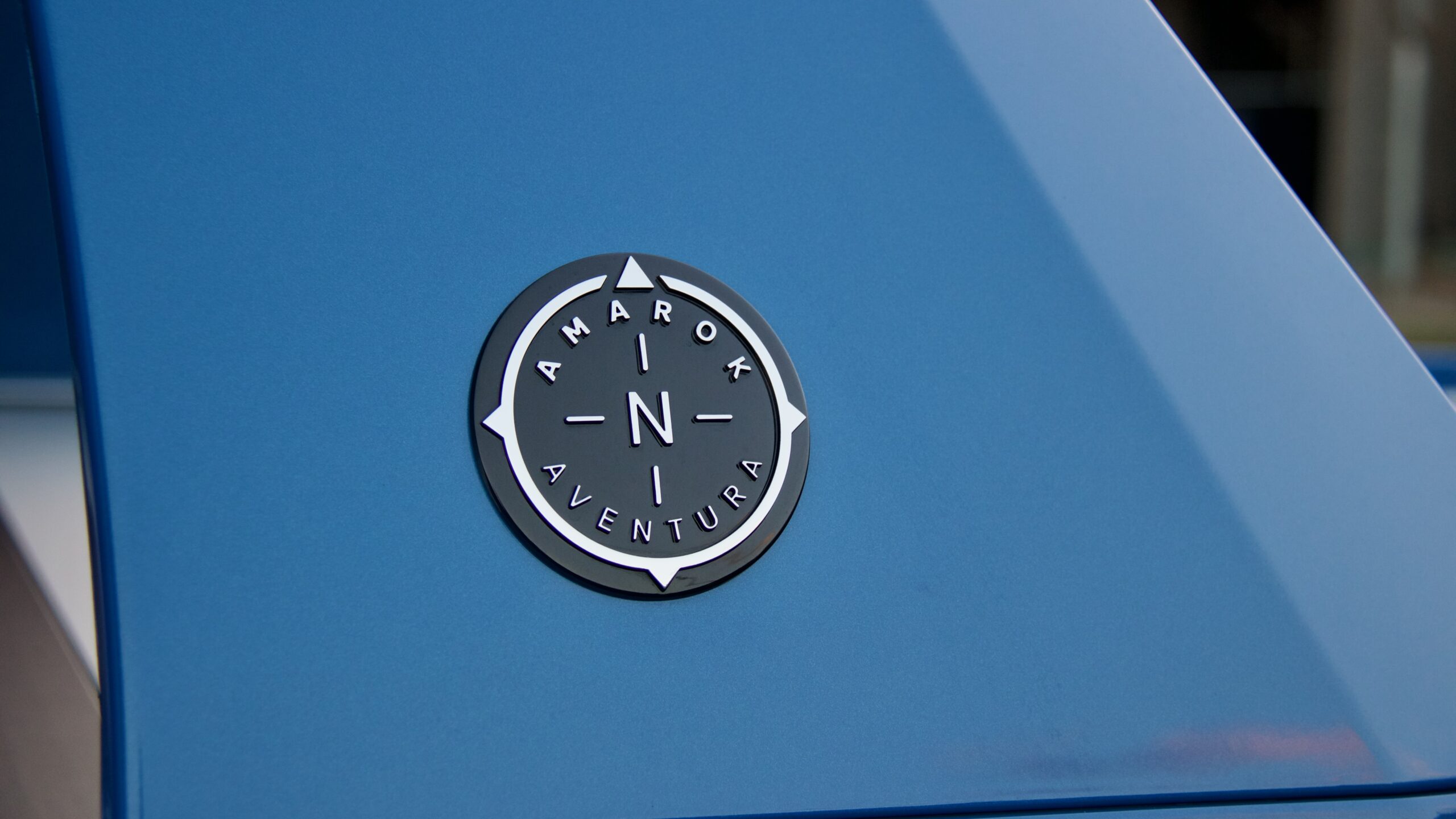
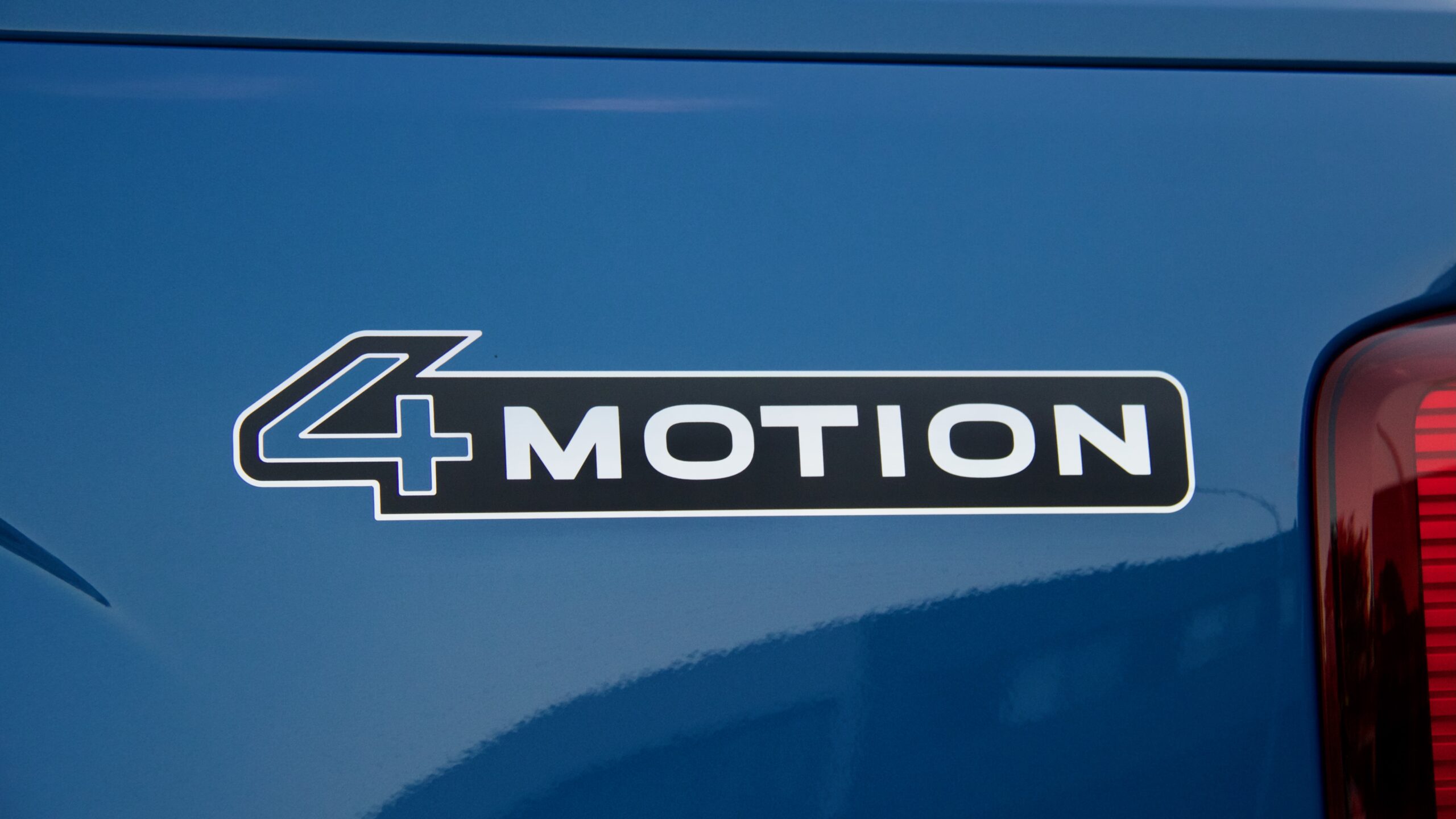
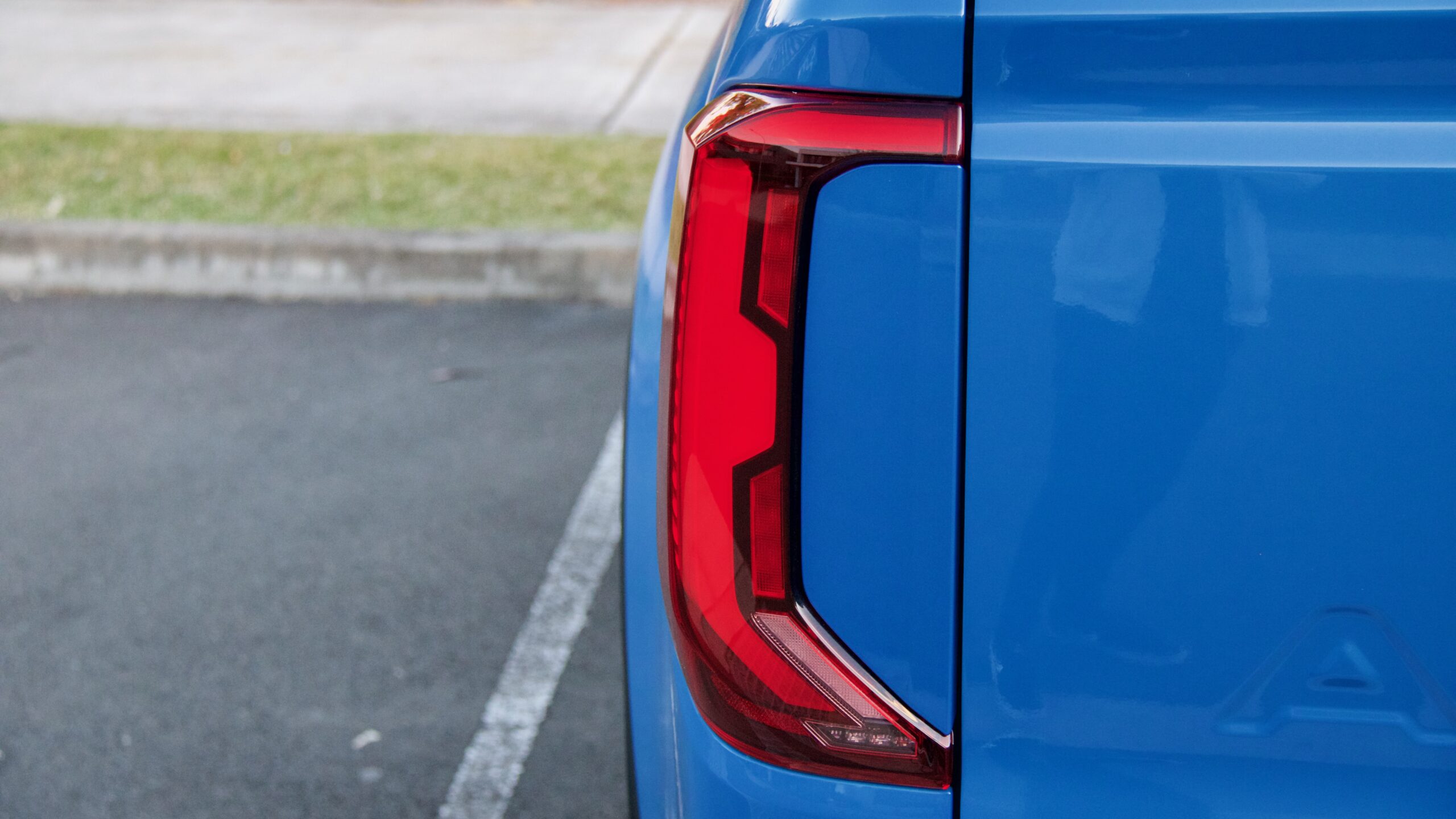
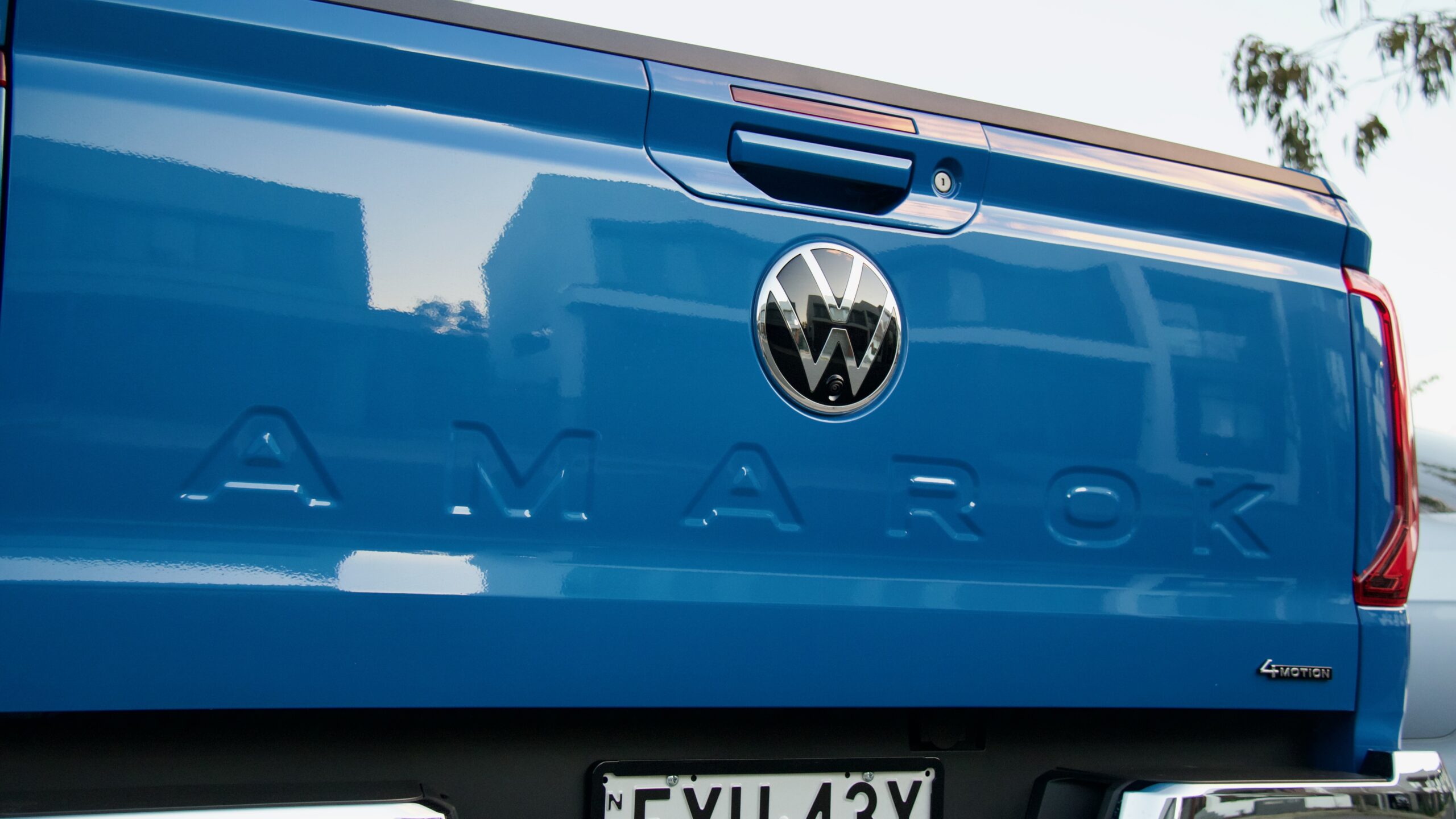
The Ranger, Amarok and BT-50 all offer similar levels of safety equipment and five-star ANCAP safety ratings, as well as features like LED lighting, auto wipers, leather upholstery with powered driver’s seats, big touchscreens with wireless smartphone mirroring and roof rails. The Amarok is not cheap compared to the BT-50, but we think it offers enough extra equipment like a premium sound system, a powered front passenger seat, a digital driver’s display, a powered tray cover, Matrix headlights and a tow bar to at least consider spending the extra money – and that’s just equipment, let alone the extra level of polish and dynamic ability that the Volkswagen adds.
Performance & Economy: 8.5/10
Under the bonnet of the 2023 Volkswagen Amarok Aventura TSI452 is a 2.3-litre four-cylinder turbocharged petrol engine – yep, it’s not diesel – making a strong 222kW of power (at 5,900rpm) and 452Nm of torque (at 3,350rpm). For the same price, the Amarok Aventura can be had with a 184kW/600Nm 3.0-litre V6 turbo-diesel, which is predicted to outsell the petrol variant significantly, but we appreciate Volkswagen Australia offering something different to those who want it. The same engine is available in the Ranger overseas, but is yet to make it to Australia – we’re sure Ford is watching Amarok petrol sales closely.
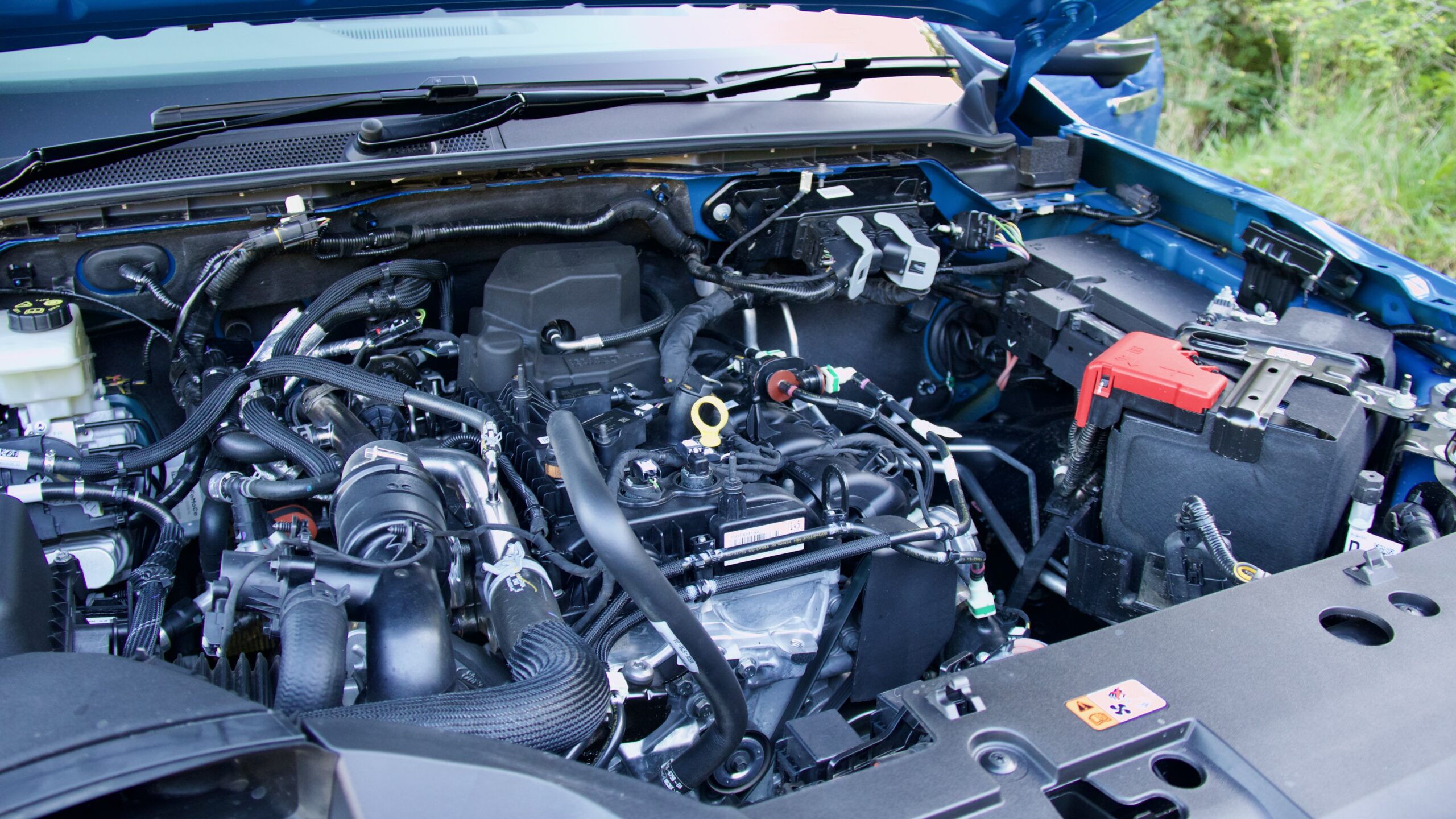
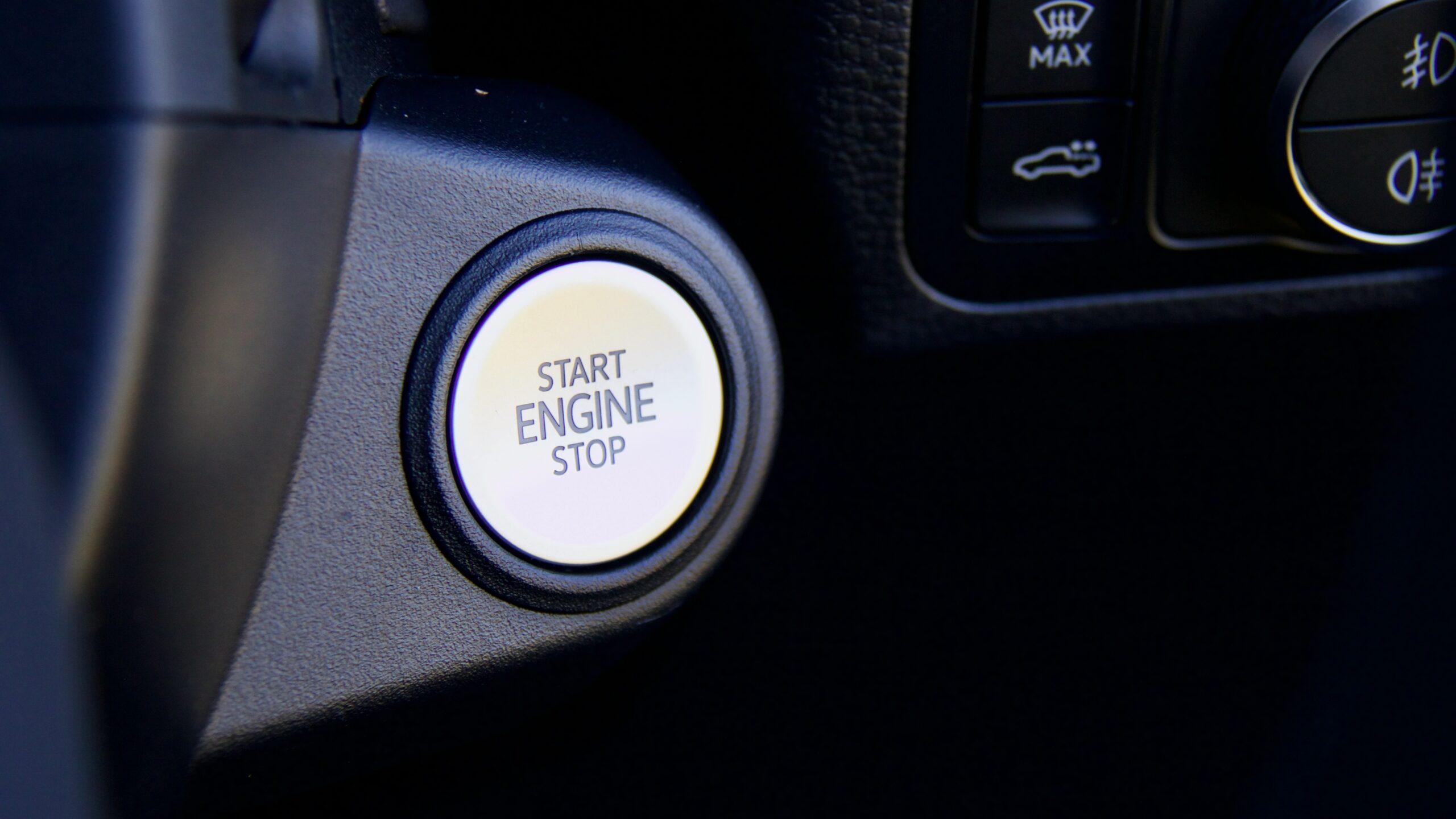
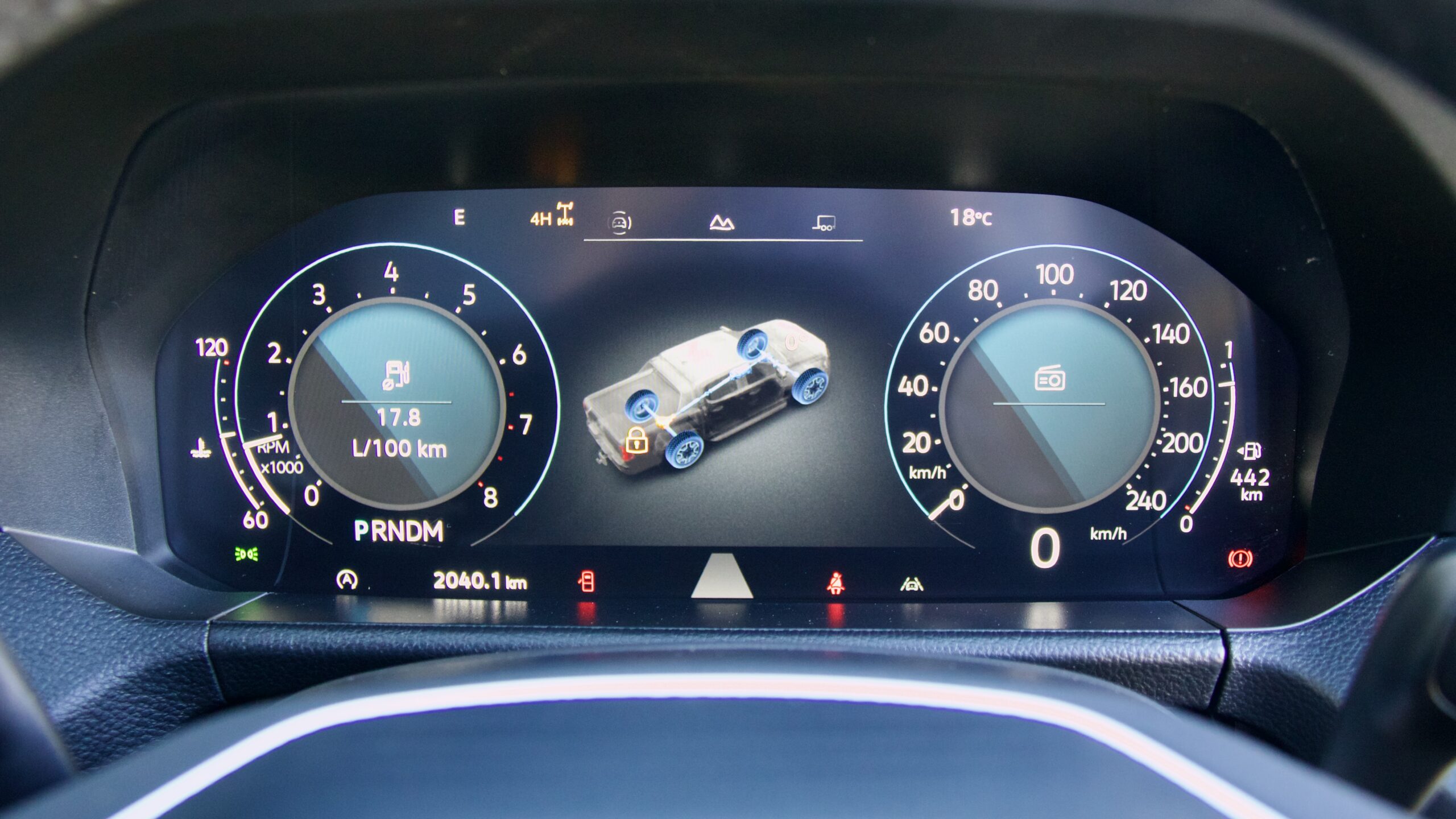
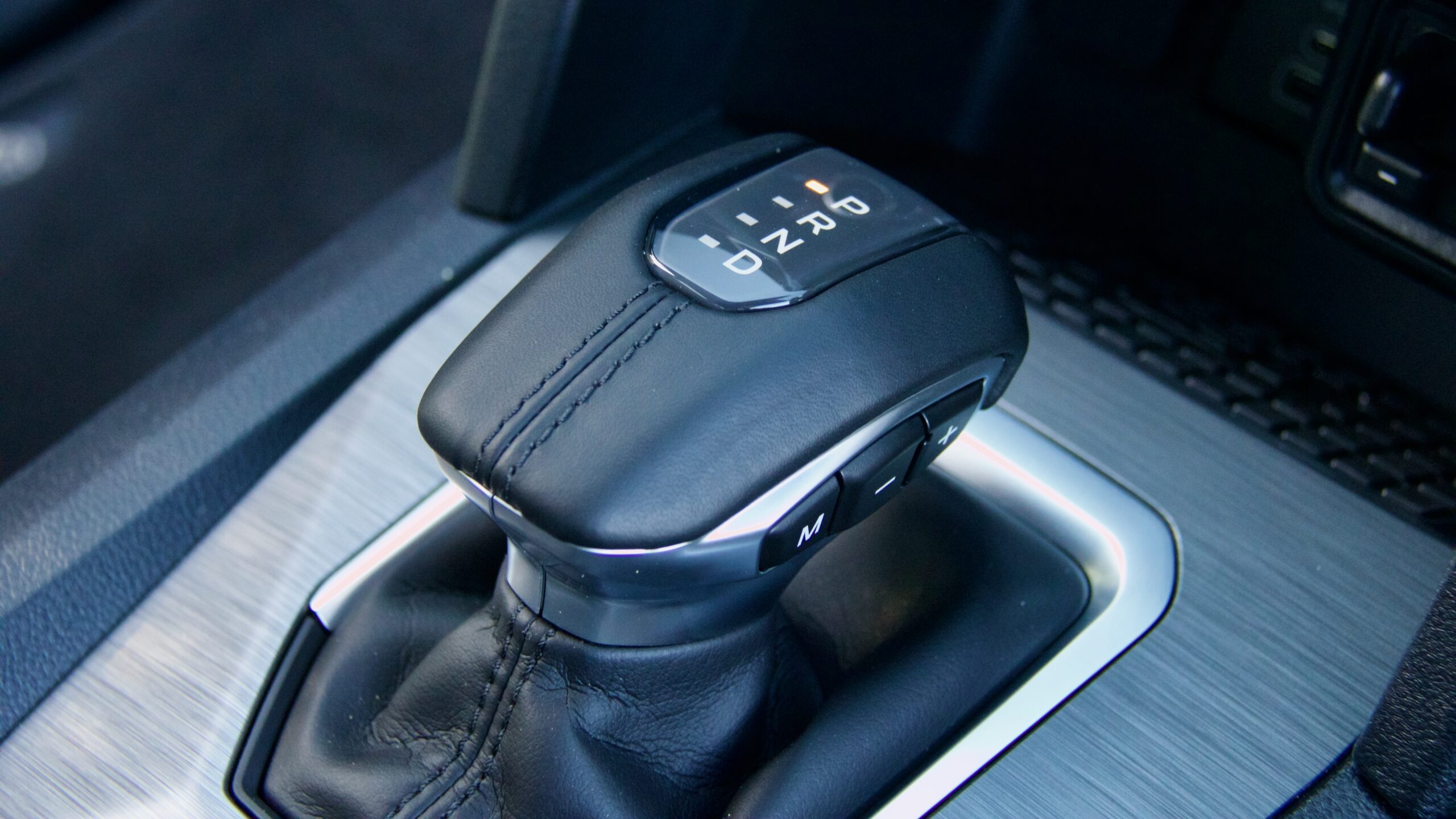
Aside from a few tradie-spec utes like the HiLux Workmate and the Ranger Raptor, all other new utes in this segment are powered by diesel engines thanks to their relative efficiency and towing capacity. It’s not the first time that Volkswagen has offered a petrol-powered Amarok either, but unlike the previous Amarok TSI, this time around it’s only offered at the top of the lineup in Aventura spec. We’d like to see this lusty petrol engine offered in more models throughout the lineup as it’s a great fit for the Amarok and its 104kg lighter tare mass versus the V6 diesel (2,228kg versus 2,332kg) makes it feel lighter on its feet. It’s also rated to tow the same 3,500kg braked trailer as the V6 diesel-powered Amarok TDI600.
Similar to the engines used in Ford products like the Focus ST hot hatch and Mustang High Performance, the 2.3-litre turbo-petrol engine in the Amarok TSI452 gives almost-hot hatch like performance. It sounds pretty good, it’s nicely refined when you’re cruising and it also provides a healthy level of punch when you need it. It’s mated to a 10-speed torque converter automatic transmission that shifts smoothly and quietly, while it’s also quite intuitive to driver input – we’d like to see Volkswagen fit paddle shifters though, as the Ford-designed manual shift buttons on the gear selector aren’t that intuitive to use.
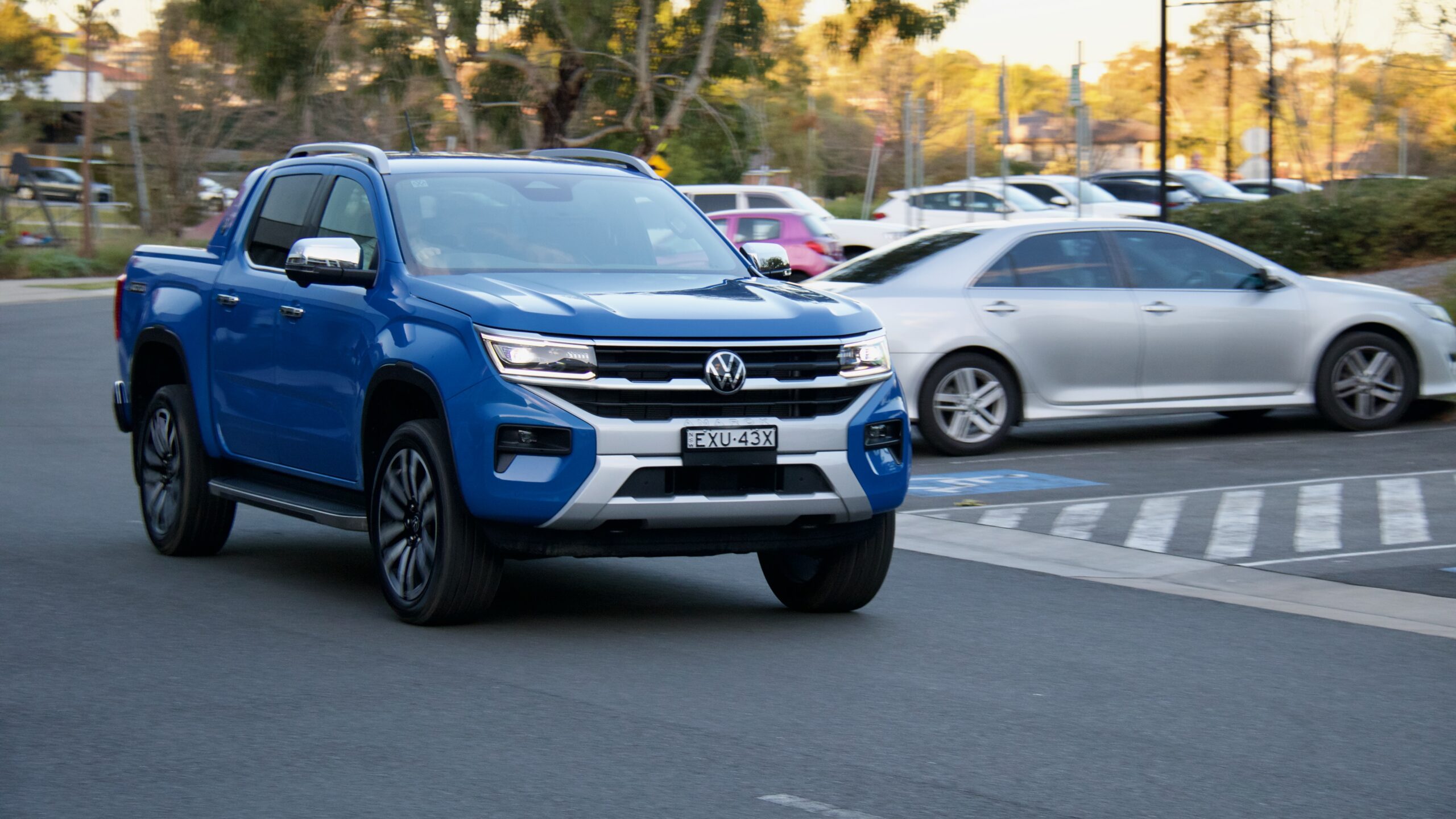
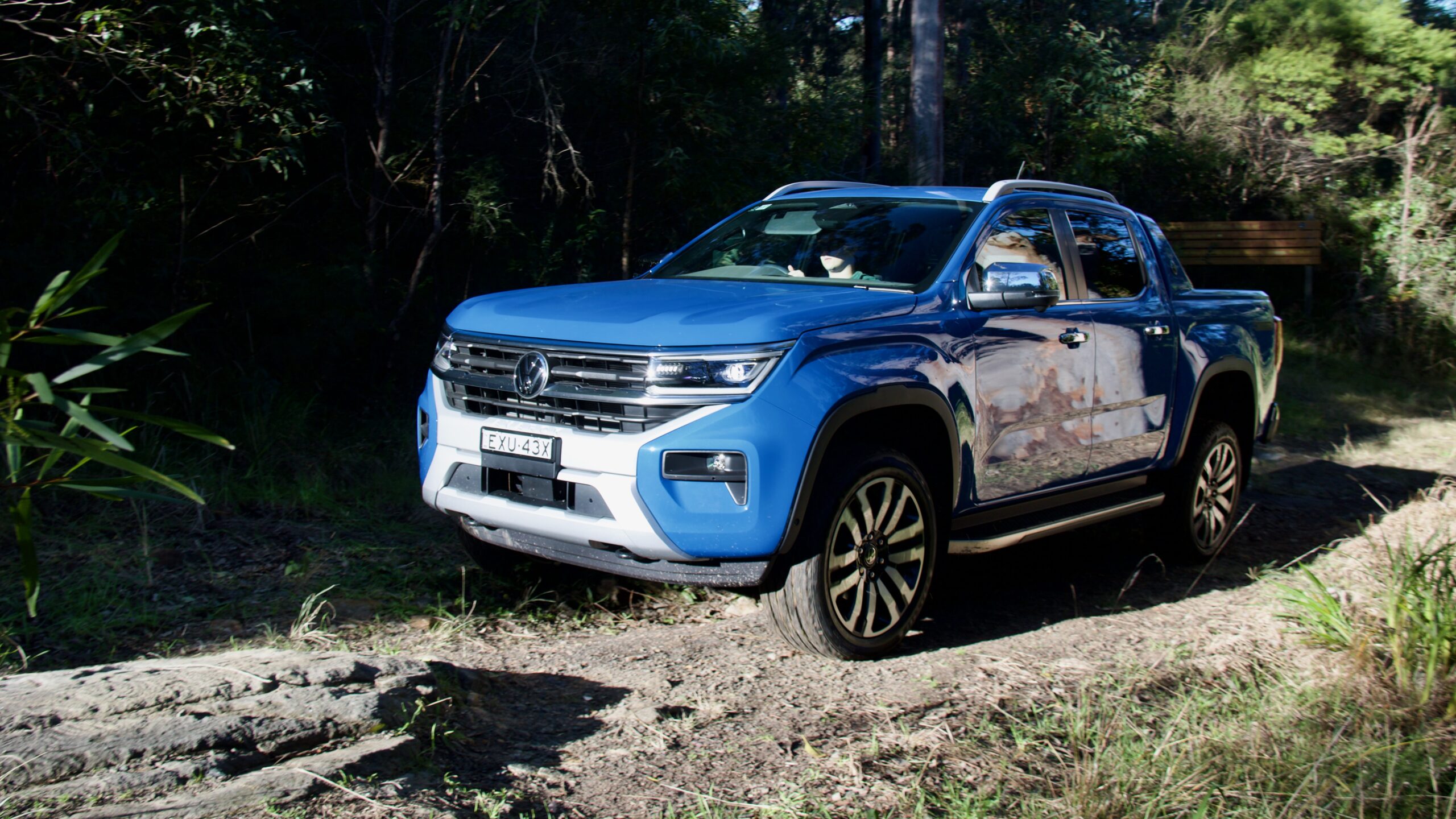
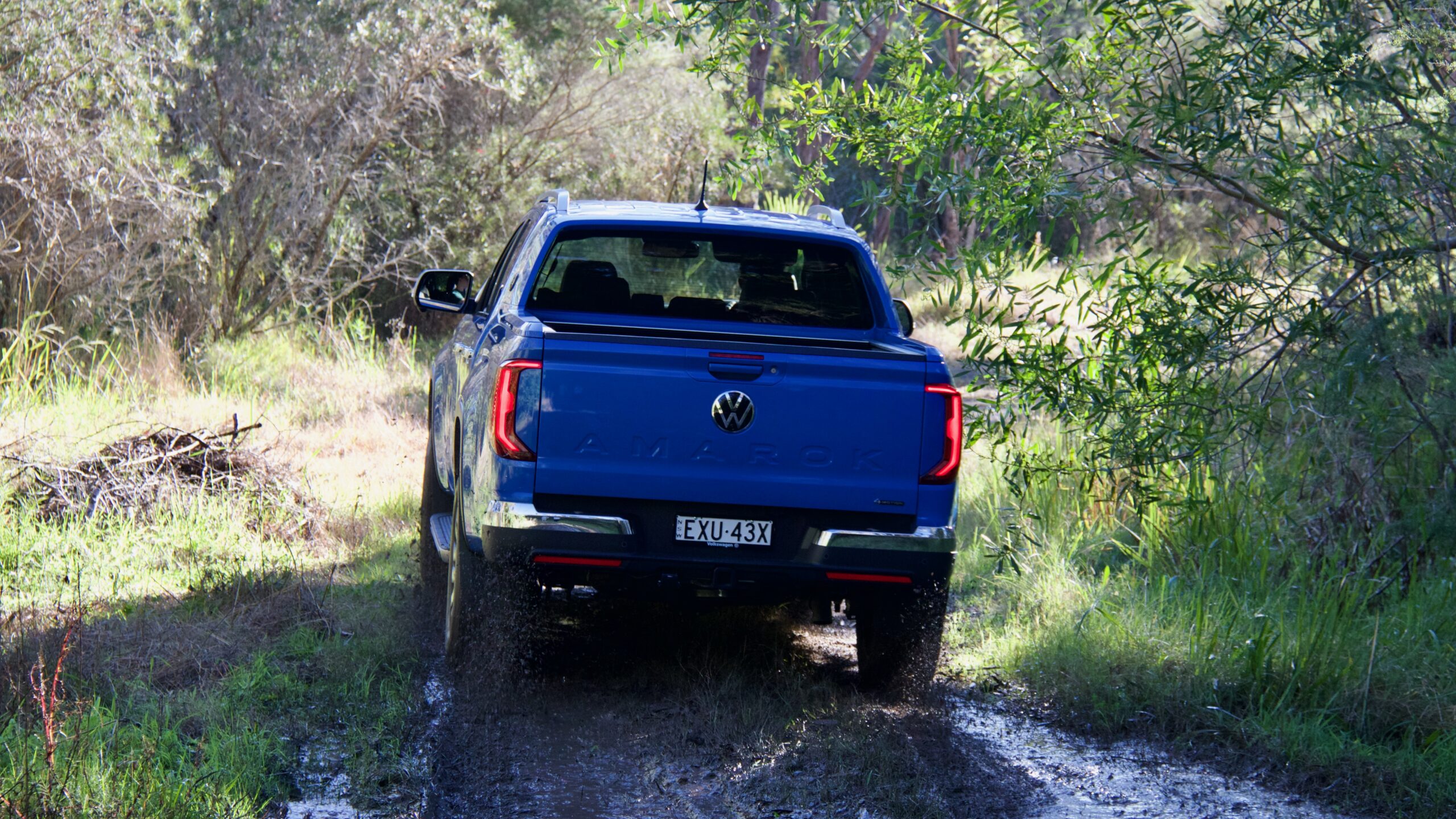
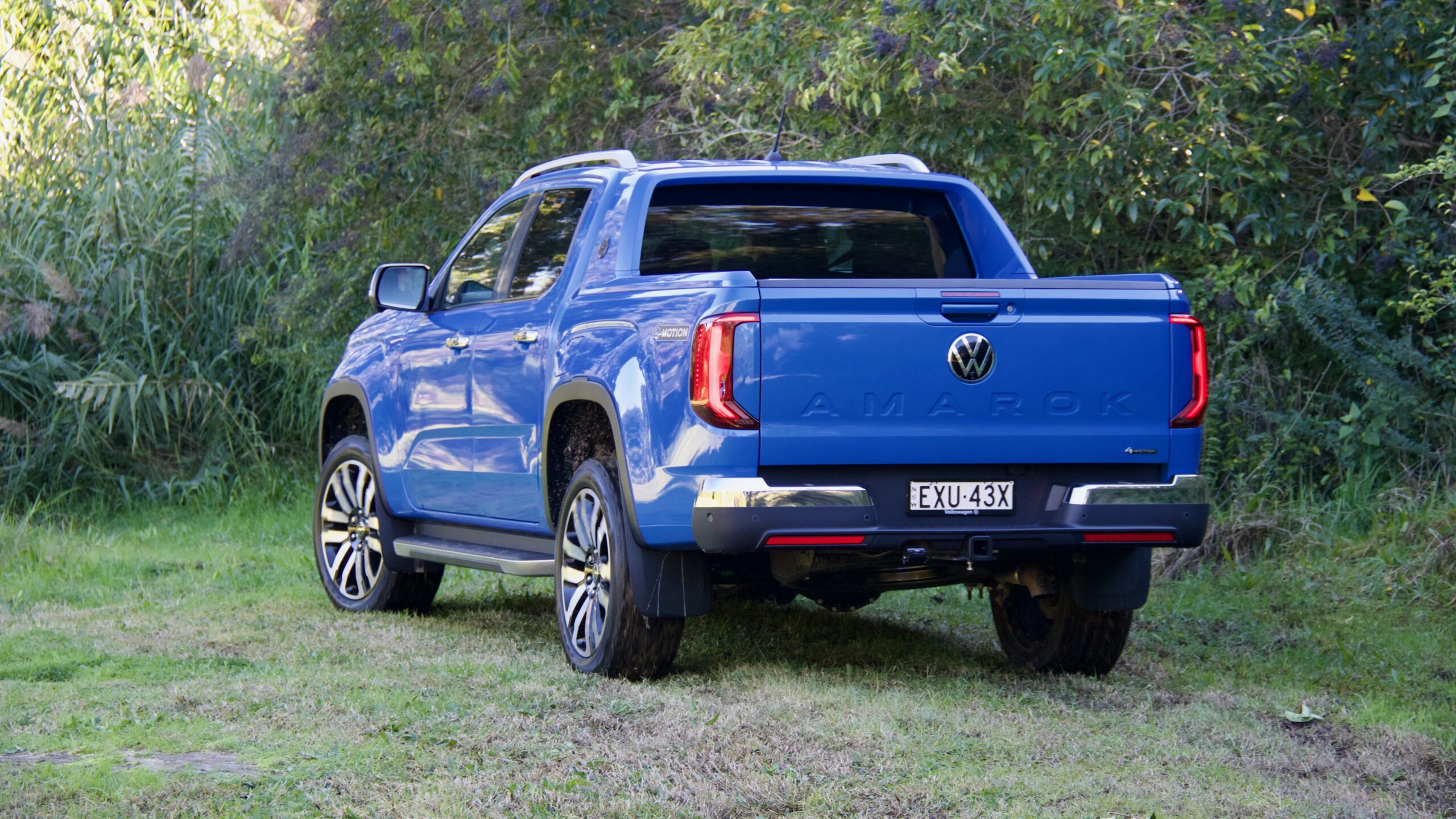
The claimed fuel consumption for the Amarok Aventura TSI452 is 9.9L/100km on a combined cycle with CO2 emissions rated at 225g/km – that’s 1.5L/100km and only 3g/km more than the TDI600 engine available for the same price. In urban driving, we achieved consumption of 12.3L/100km, which is not bad for a large vehicle such as the ‘Rok – highway driving would likely lower this a lot. The Amarok TSI452 uses minimum 95RON premium unleaded and features an 80-litre fuel tank.
Ride & Handling: 8.5/10
Based on the same platform as the Ford Ranger that the Amarok was developed with, the 2023 Volkswagen Amarok Aventura drives quite well. As you’d expect for a product that shares so much with the very accomplished Ranger, it’s great to drive, but there are surprising differences in the detail. The Amarok immediately feels more car-like than the Ranger – and the rest of the ute segment – thanks to its taut ride quality that might also be a touch firm for some, especially on the Aventura’s huge 21-inch wheels. But because of the usual Volkswagen tautness in the ride, those coming from something like a Tiguan Allspace will feel quite comfortable in the Amarok.
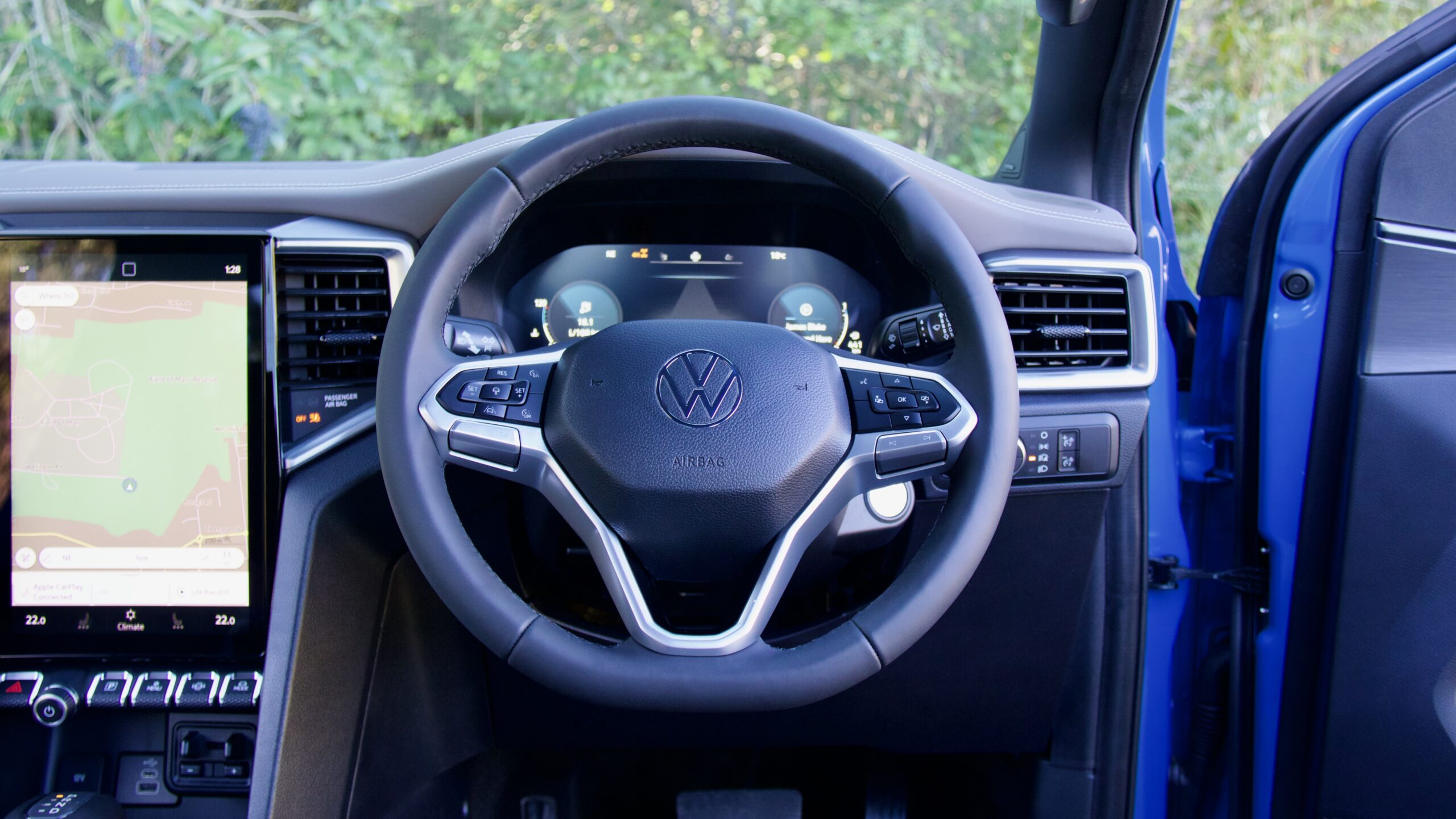
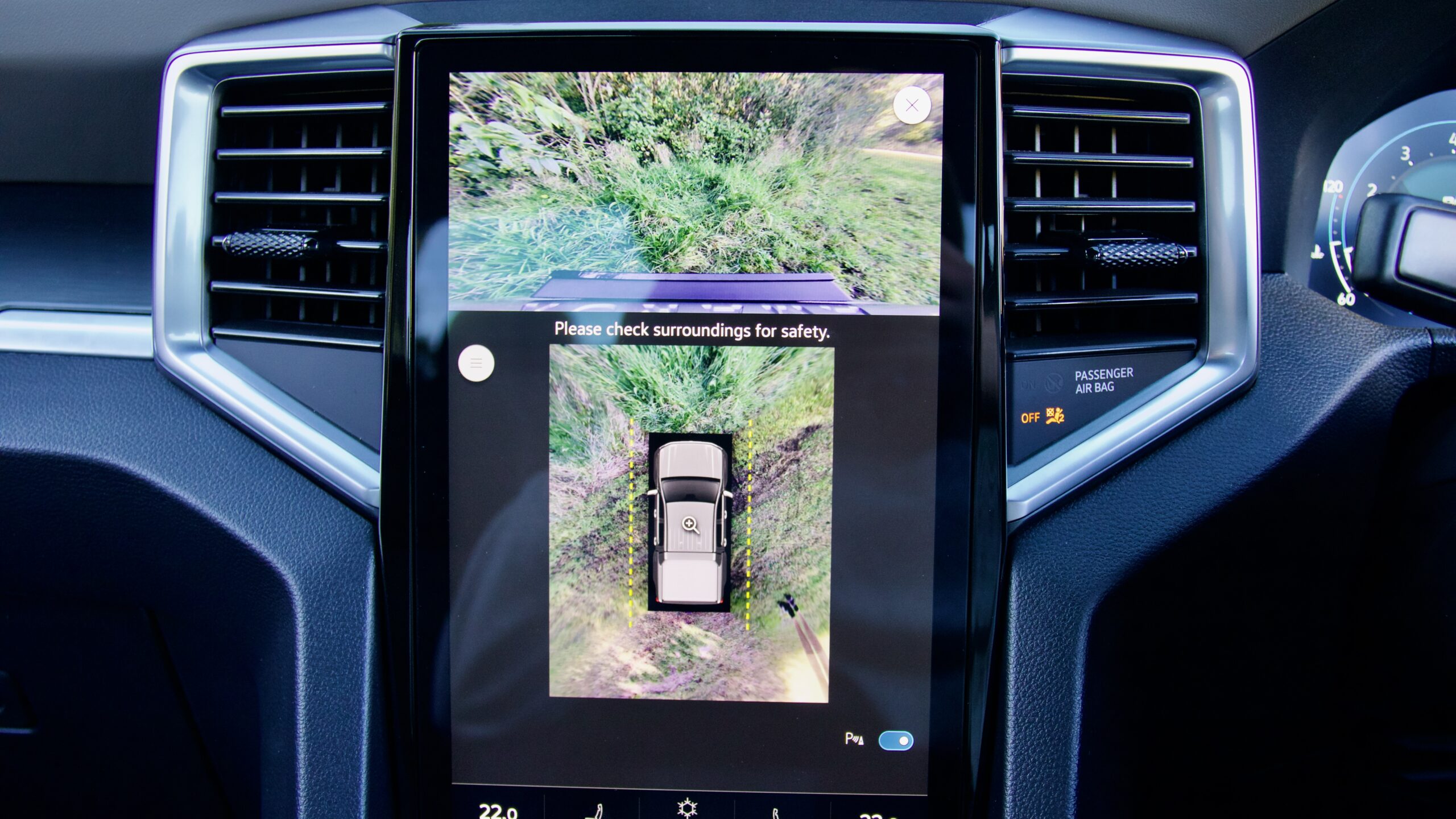
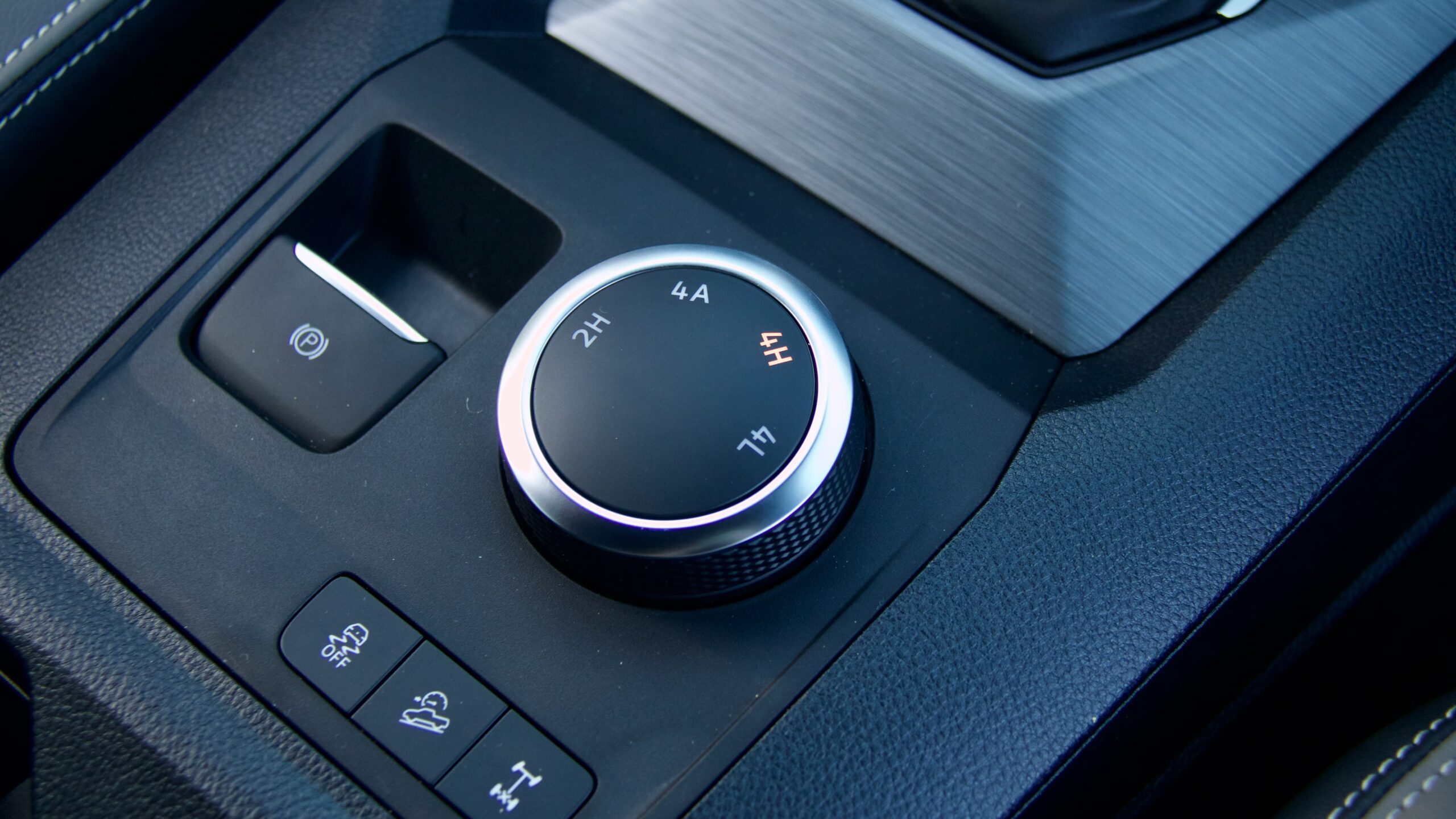
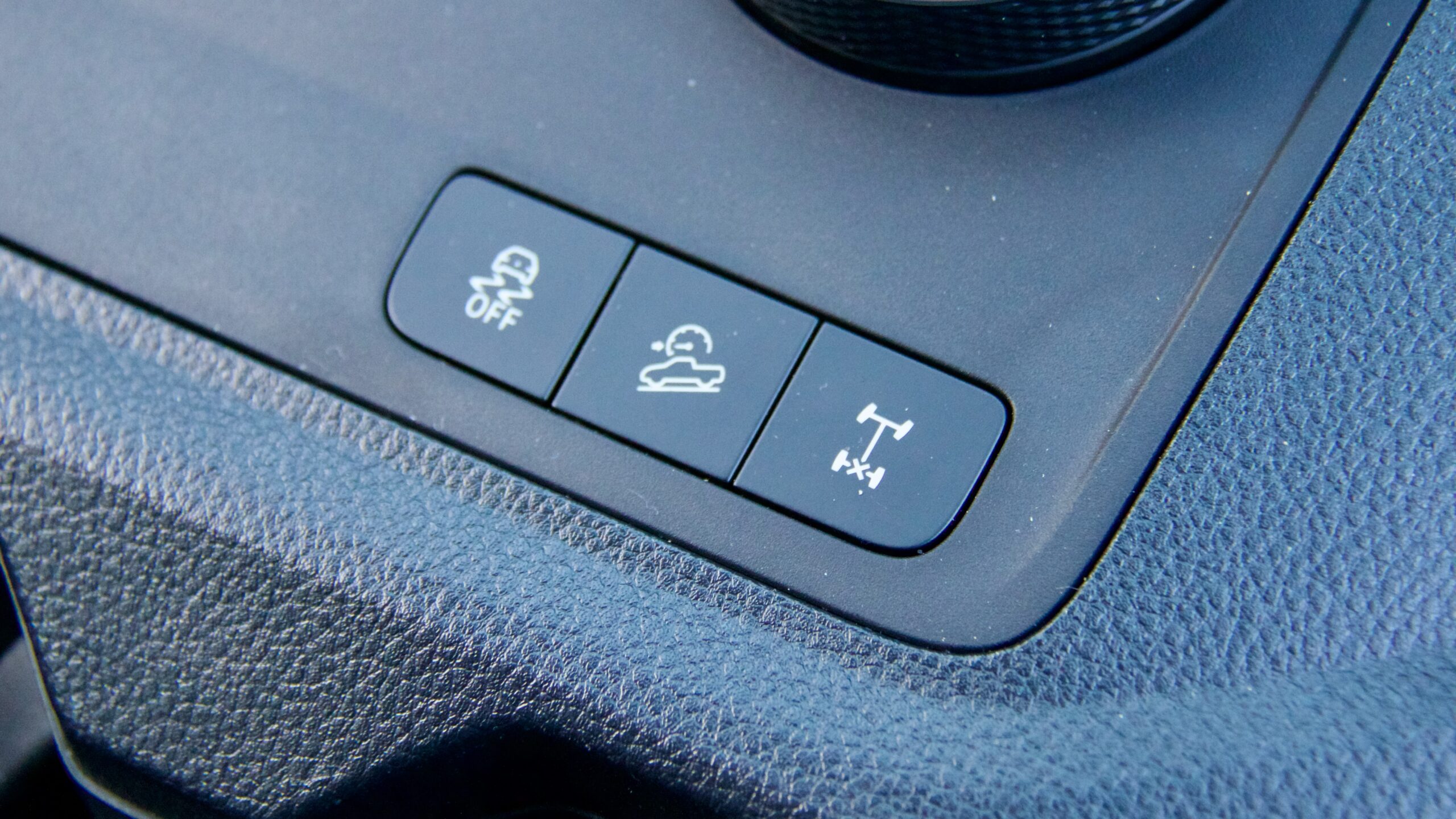
While the Amarok Aventura TSI452 is no sports car, it genuinely doesn’t feel like a ute from behind the wheel, instead feeling like a large SUV. Its refinement is excellent, with nicely hushed noise levels at speed, while the handling is impressive for such a large vehicle – it’s not a Lotus Elise, but the term ‘ute GTI’ is definitely applicable here. It’s possible to have a reasonable amount of fun behind the wheel of the Amarok – sure, it’s no Ranger Raptor but we don’t think it’s too far off either. Visibility in the Amarok is good for a ute thanks to its large mirrors and excellent 360-degree camera.
As we experienced in the Ranger, the active safety features are quite well tuned too and are easily the best in the segment. Features like the auto emergency braking and lane keeping assistance work very well and are subtle in their operation – they’re less abrupt than the D-Max and BT-50 twins, for example. We also love the Matrix adaptive high beam functionality for the headlights, which works a treat.
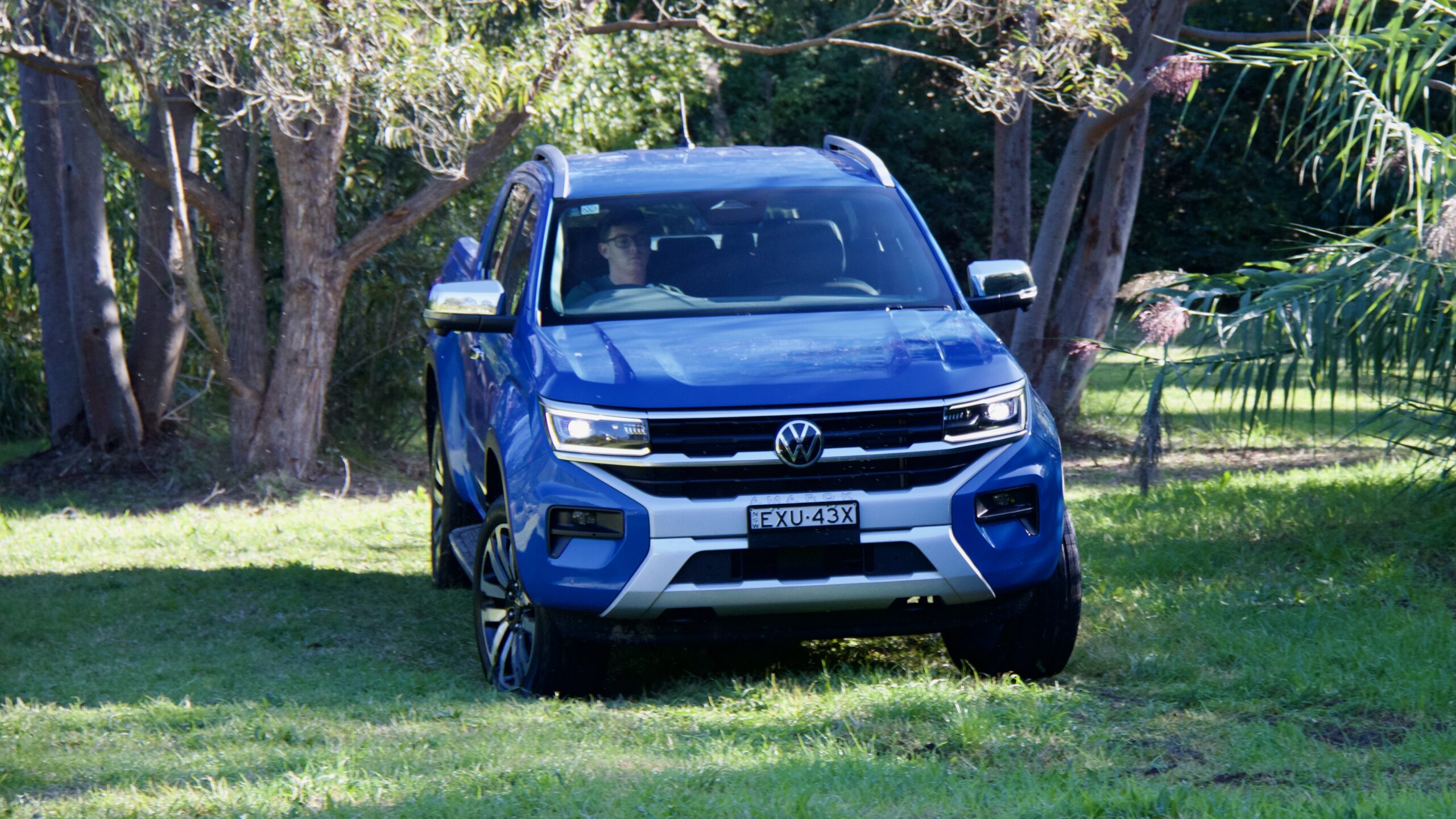
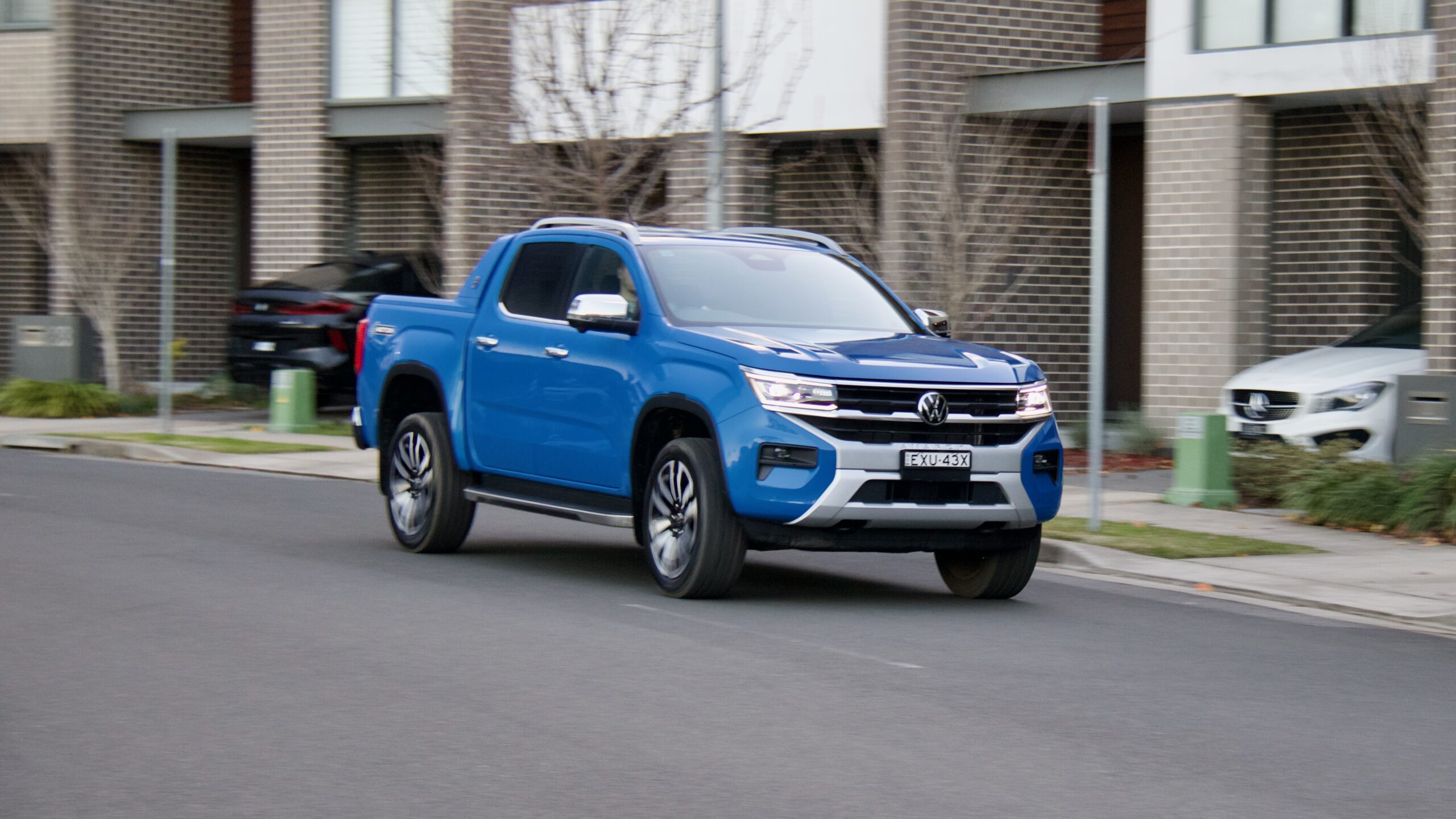
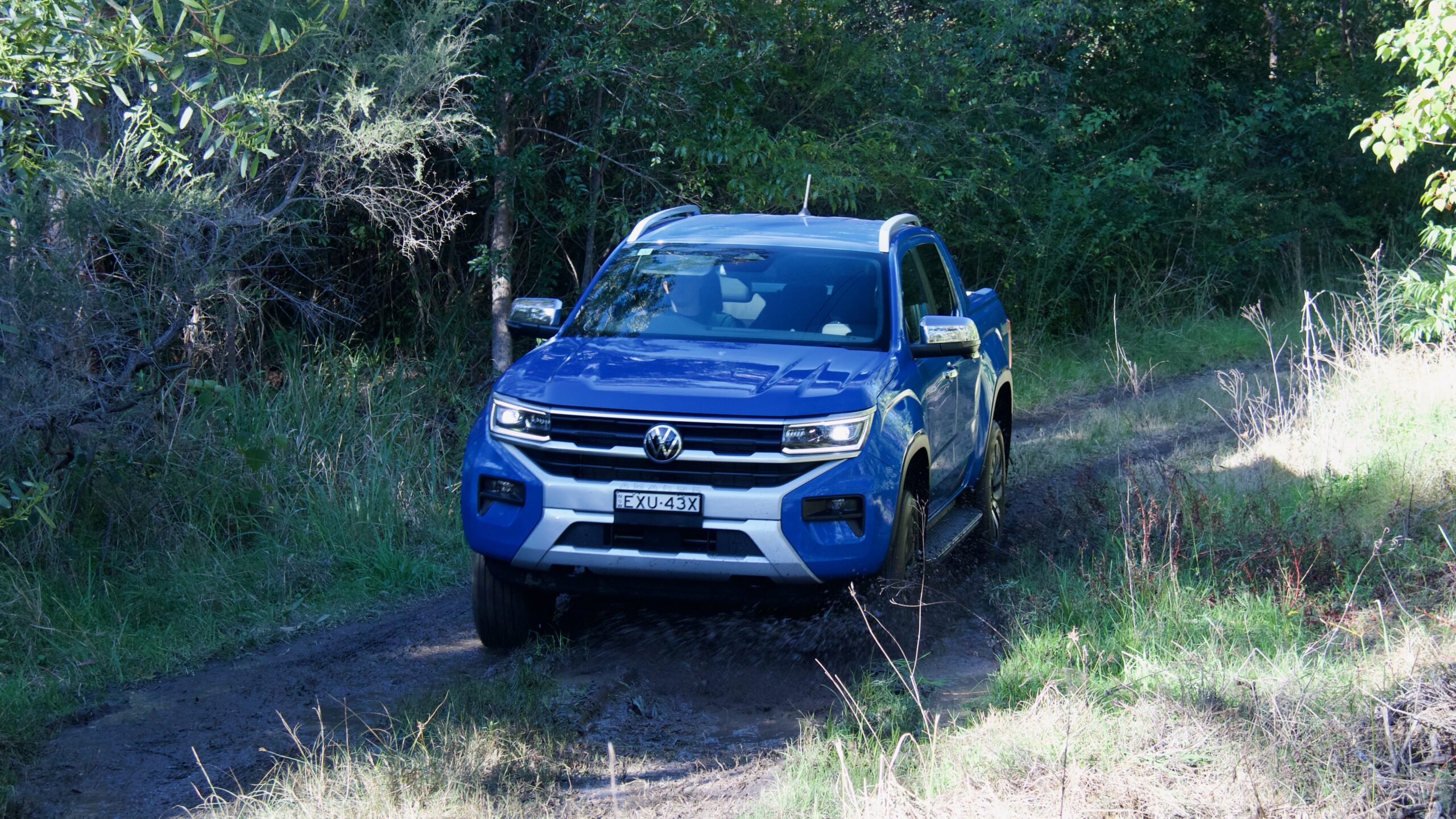
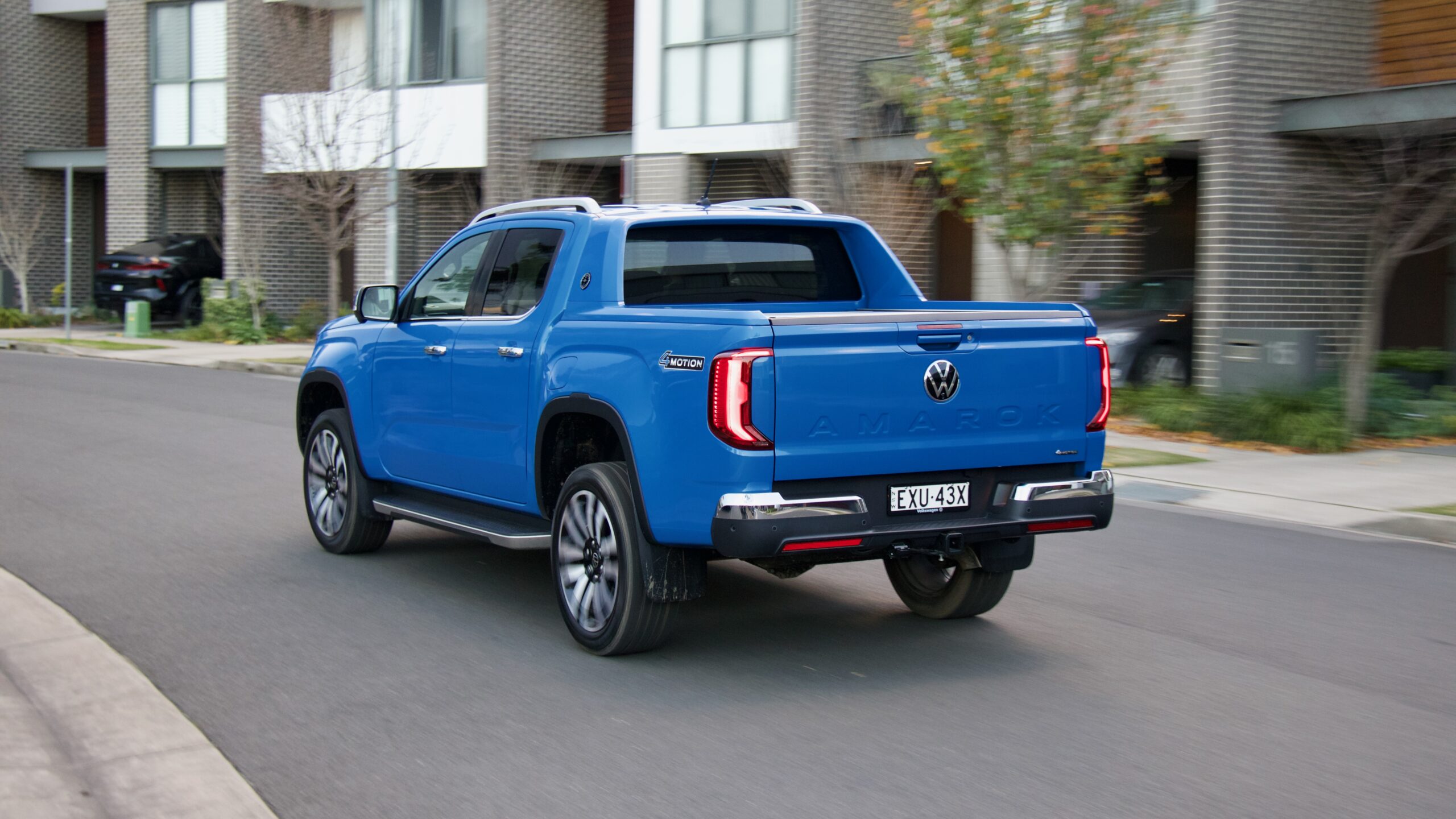
Those wanting to tow with the ‘Rok can enjoy a 3,500kg braked towing capacity – even with the petrol engine – while its tow ball weight is 350kg and its GCM is 6,200kg (the Amarok Style and PanAmericana increase that to 6,400kg). We tested the Amarok on light off-road duties and found it to get up moderate inclines with ease, while its hill descent control was quite impressive as well. The Amarok’s off-road modes are pretty widespread too, with normal, eco, slippery, mud, sand/snow and towing/heavy load modes available – plus the usual high- and low-range gearing and a rear diff lock.
Interior & Practicality: 9/10
Opening the door to the 2023 Volkswagen Amarok Aventura reveals a well-rounded, good quality and modern cabin that’s well equipped and quite comfortable. The dashboard design is quite similar to the Ranger on which it’s based – which is no bad thing, as it’s our favourite ute cabin – but the materials are higher quality and the displays are richer in quality than the Ford.
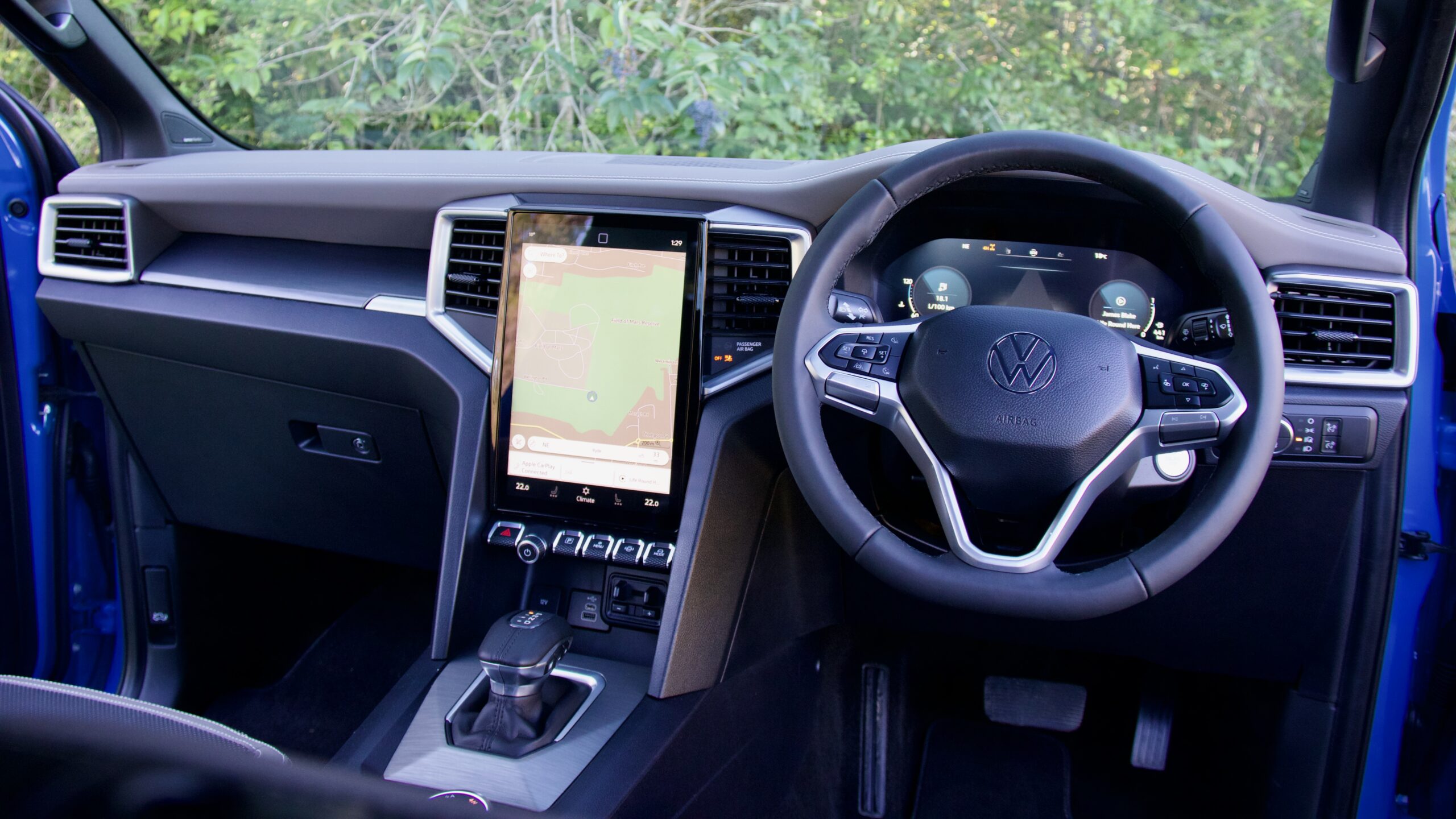
Materials used in the Amarok’s cabin are the best we’ve seen in the ute segment – sure there are hard touch points (it’s a ute after all) but the stitched leatherette used on top of the dashboard and door tops is quite nice to the touch, as is the leather steering wheel, which is a big step up on the grainy leather used in most competitors. We’d really only like to see a soft touch panel added on the side of the centre console as a knee rest. In any case, HiLux drivers will feel as if they stepped 20 years into the future by getting into the Amarok. The seats offer more support than most utes too, and plenty of electrical adjustment for the driver’s chair as well, though larger people might find them a bit small – my six-foot-three partner didn’t find them to suit his frame, but my six-foot self loved them.
The Amarok’s cabin is quite practical with big door bins, a big glovebox, a box underneath the centre console, a tray atop the dashboard, a handy deep second glovebox and a tray underneath the dashboard with a wireless phone charger – though its cup holders are a touch shallow and the Ranger’s pop-out cup holders at the side of the dashboard don’t feature, unfortunately. Still, there are more than enough storage options in the Amarok’s cabin for most.
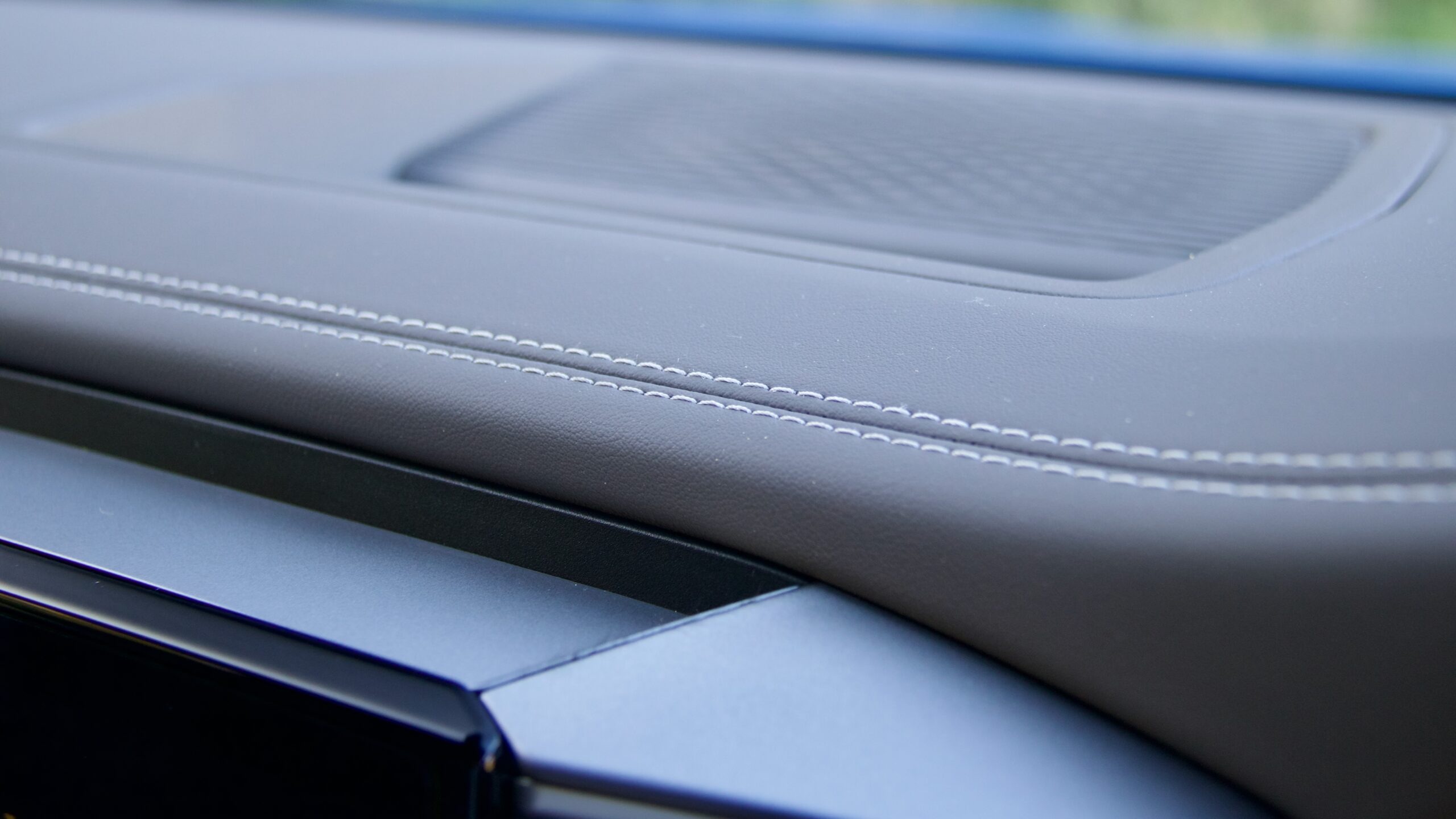
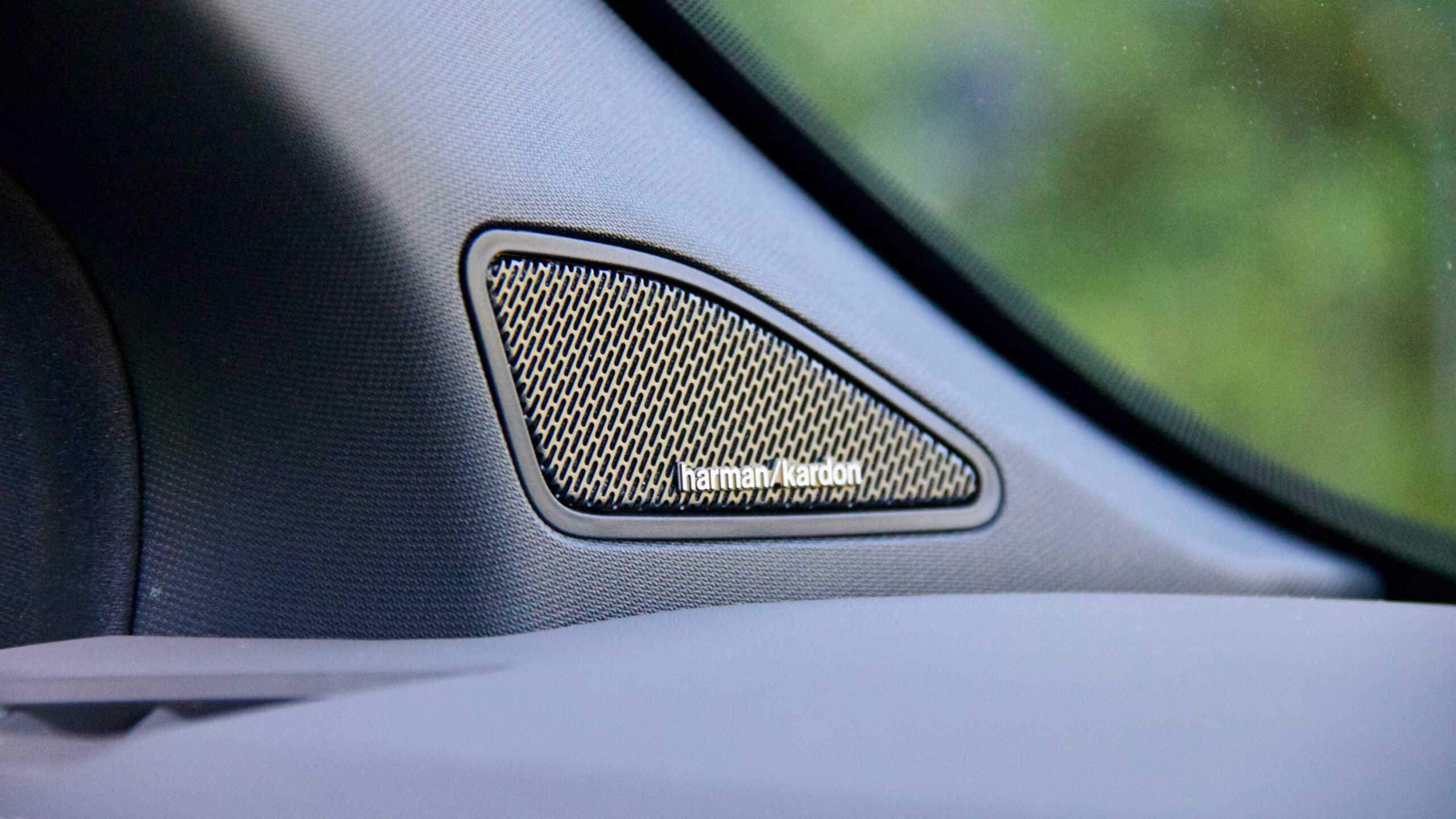
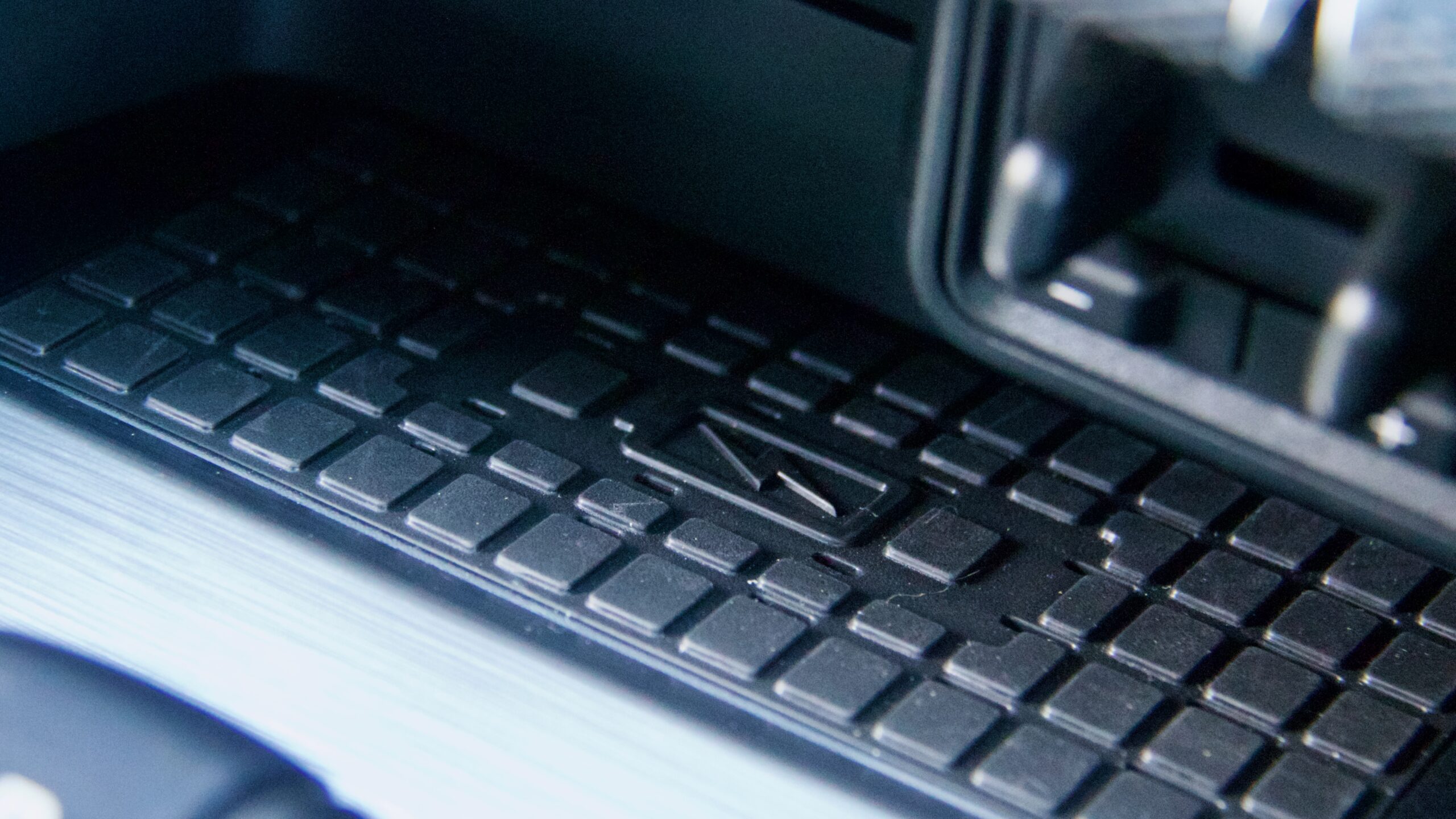
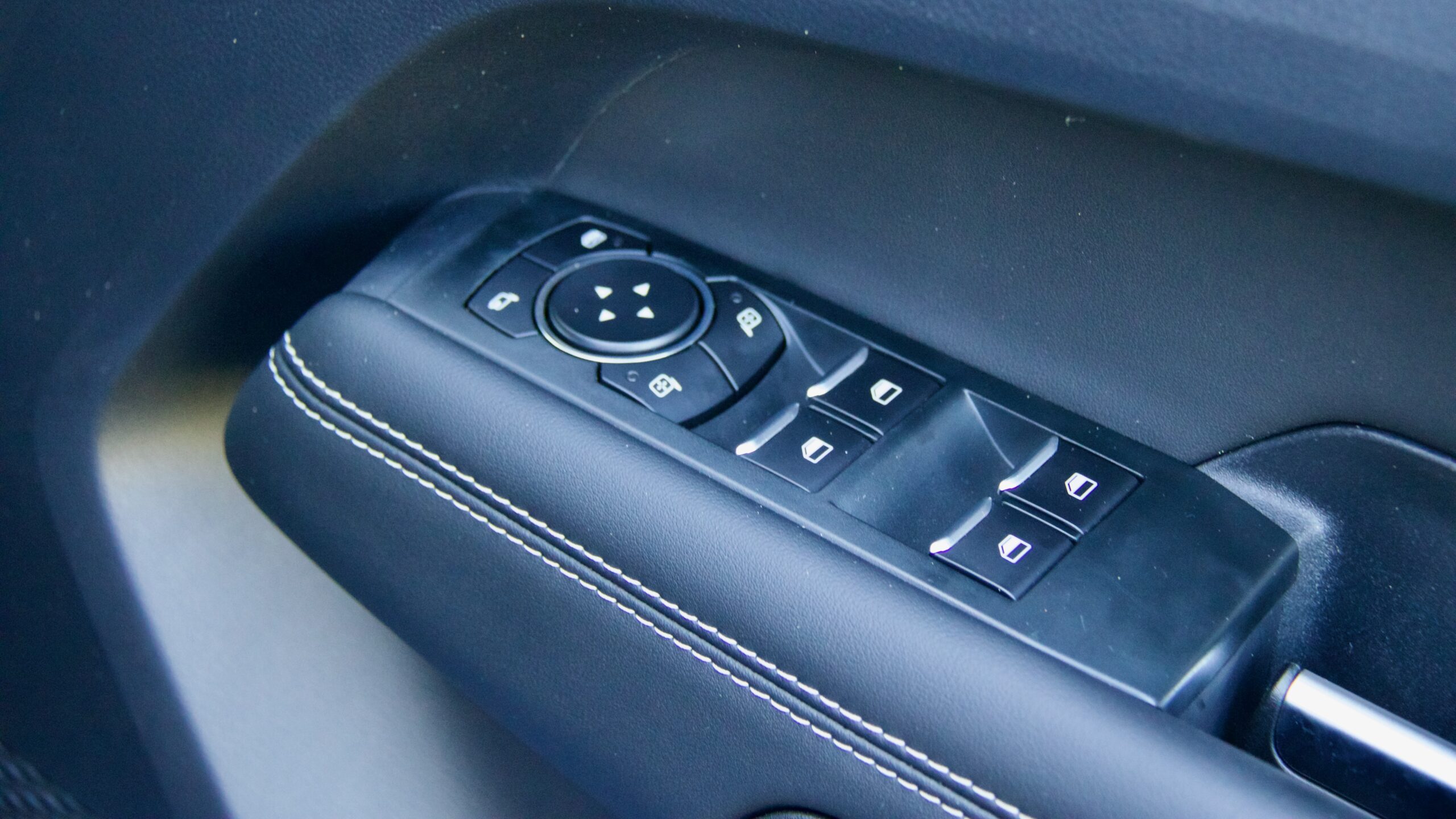
Centre of the cabin is a 12-inch vertical touchscreen with wireless Apple CarPlay and Android Auto, satellite navigation and digital radio – though no live services for features such as the navigation and remote smartphone app access. The layout and responsiveness is nearly identical to the Ranger, but a Volkswagen skin has been applied to Ford’s software with the Volkswagen colouring and fonts we’ve come to know and love. It’s not quite as intuitive to use as the Ranger’s system in some ways – there are no physical AC controls for example, you have to press the climate button first to gain access to them – but it’s otherwise pretty good and far better than the media systems used in all other competitors.
The 12.3-inch driver’s display is a full-Volkswagen system, however, and we think it’s more attractive and easier to use than Ford’s. Plus, it’s much nicer to look at that than the analogue dials in every other ute. The screen itself is high quality – versus the somewhat grainy unit in the Ranger Wildtrak – with bright colouring, while the centre map is very handy and it’s also quite configurable as well to adapt to different tastes. The Harman Kardon sound system is also easily one the best in the ute segment too, with immersive sound quality and good bass levels.
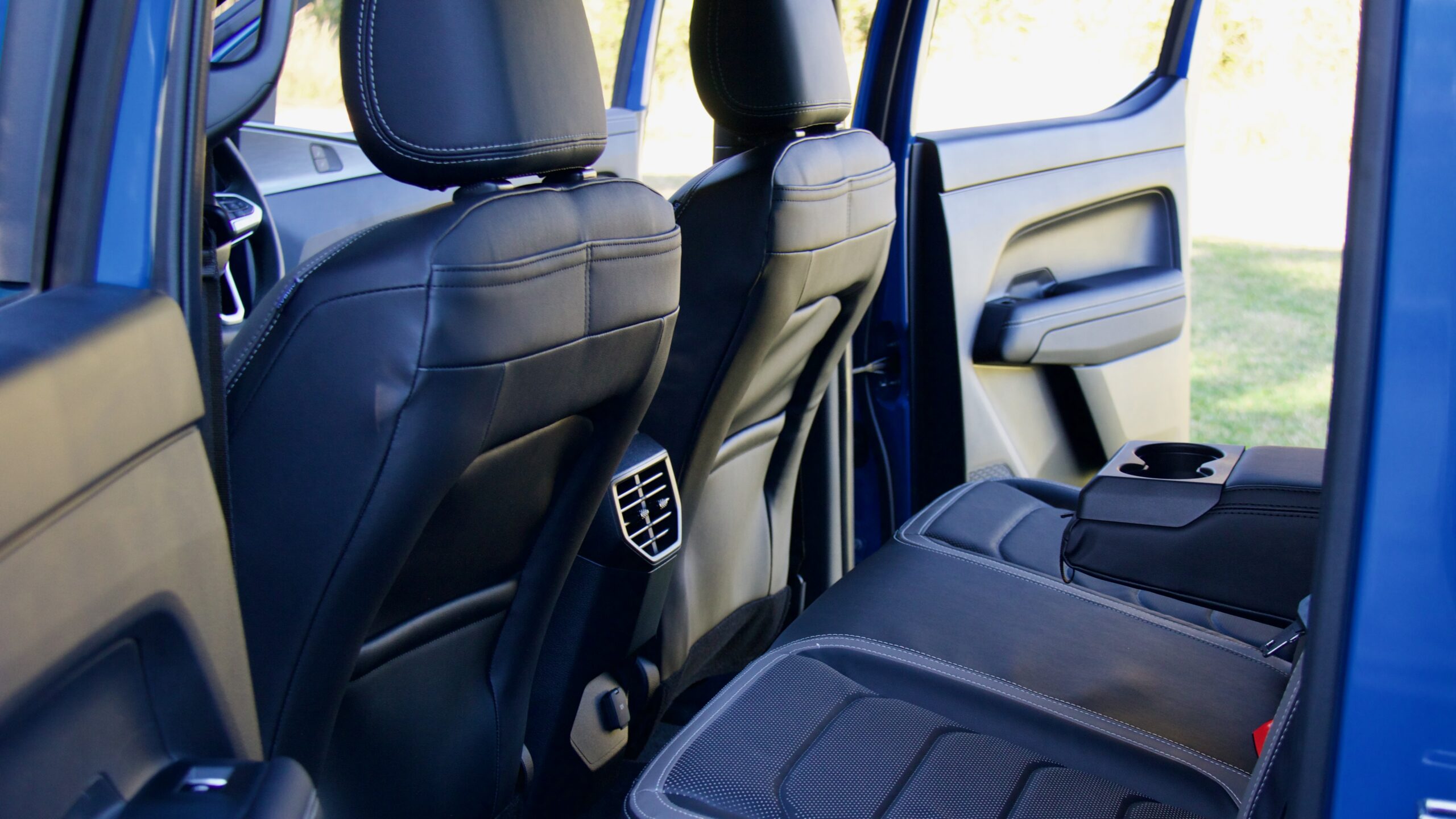
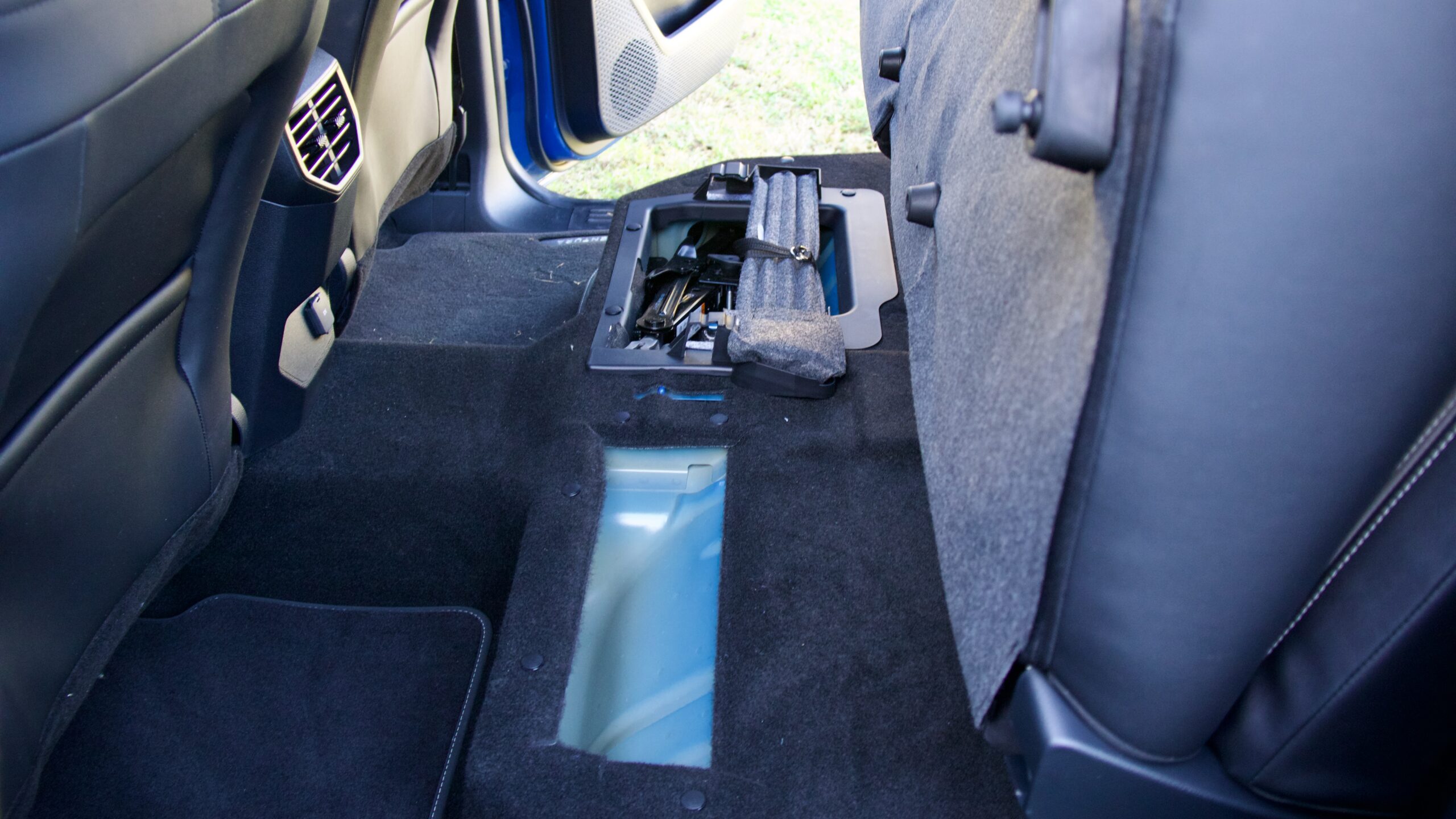
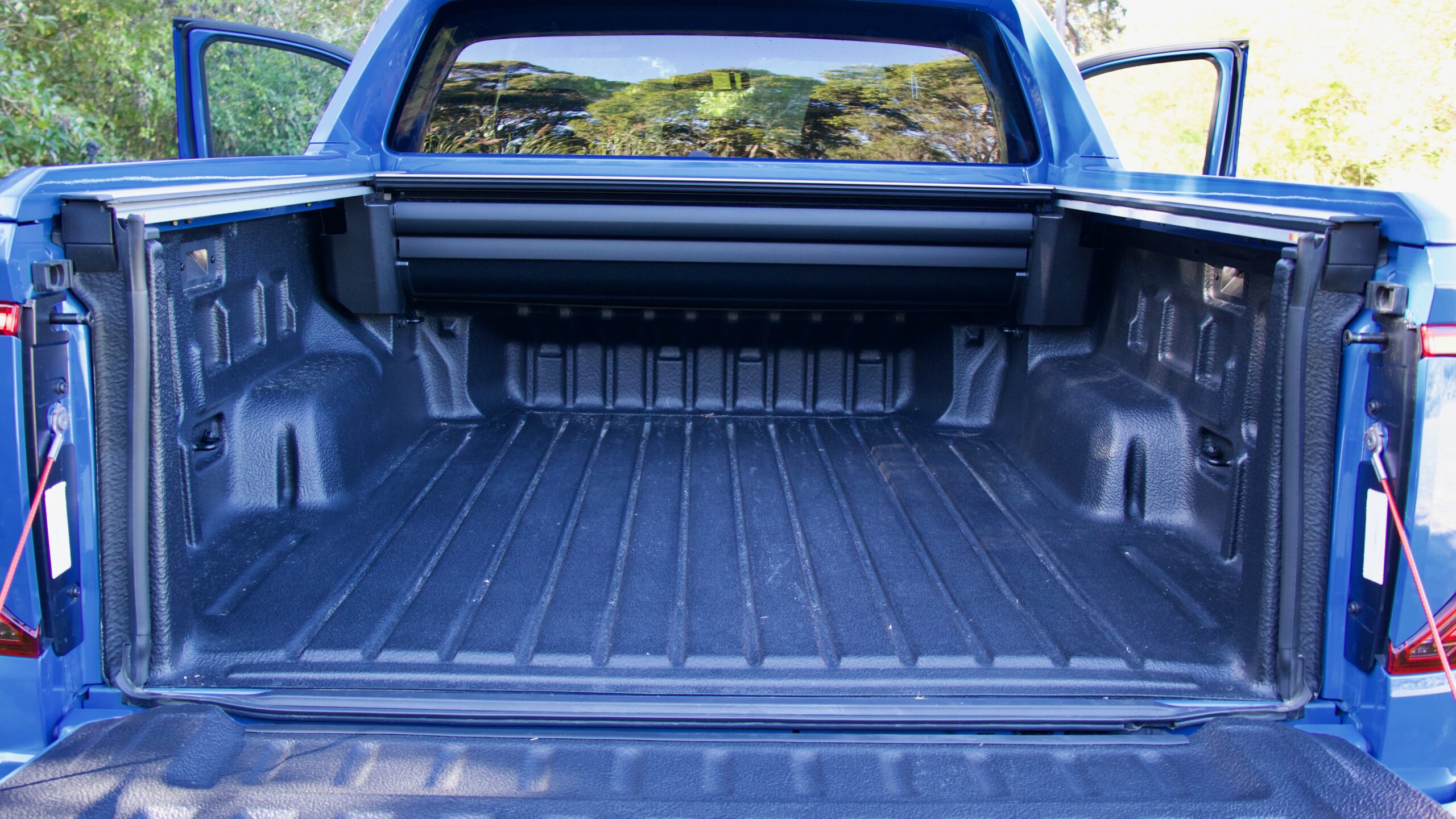
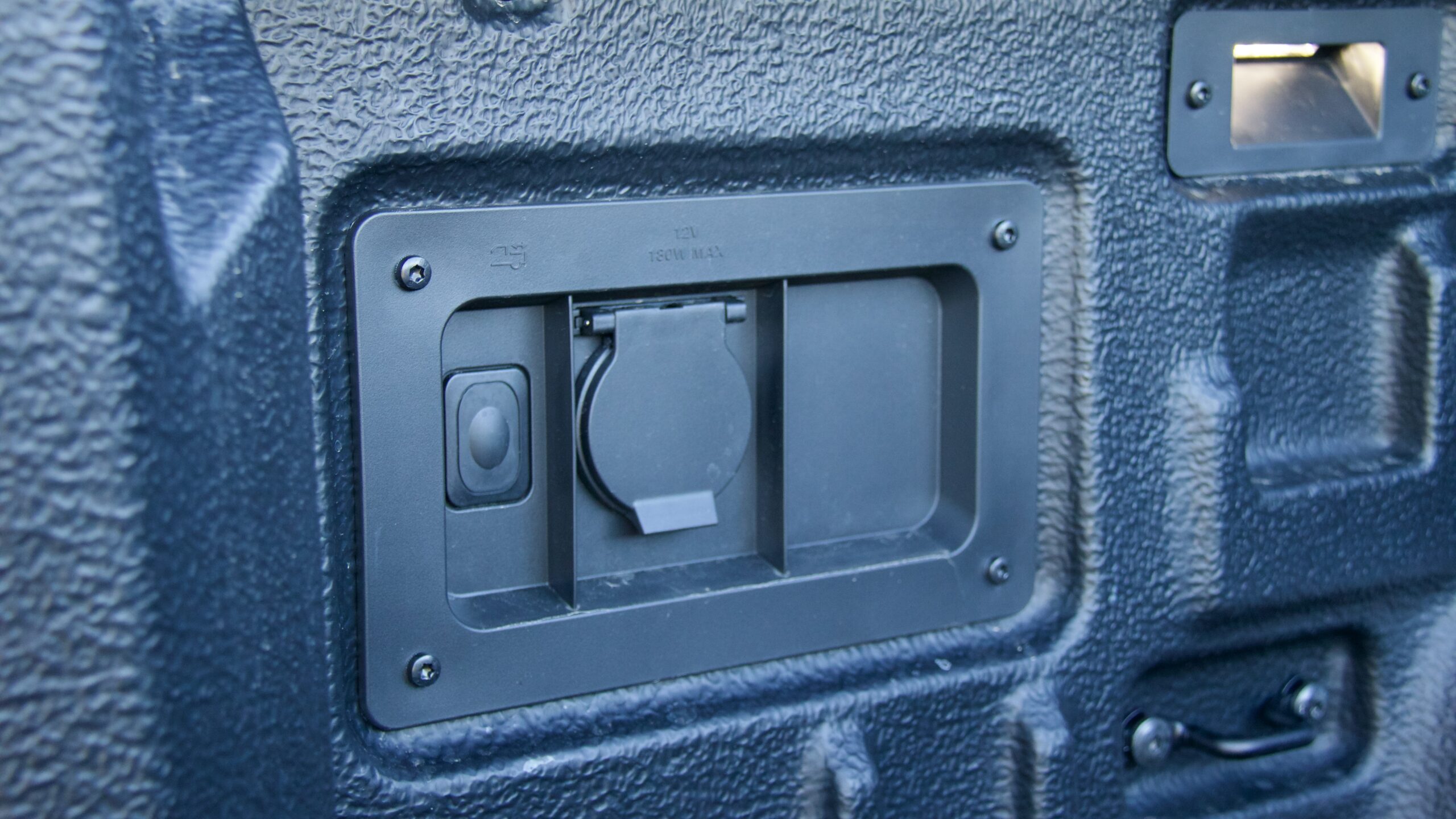
Like the Ranger, two six-foot adults will fit fine in the rear of the Amarok with ample headroom. There are features like air vents, a 12V socket, map pockets, handy phone holder pockets above the map pockets, a rear centre arm rest with cupholders and door pockets – though no USB ports. The seatback folds down for more practicality, while the seat base also folds up to reveal two nicely sized storage areas.
The tray was one of the best parts of the old-generation Amarok as it could uniquely (upon its release) fit a Euro-sized pallet. The new Amarok’s tray is even larger than the old model and offers 1,224mm of width between the wheel arches, as well as a 12V socket, six tie down points and an easy-lift tailgate. Just like the Ranger, it’s best in class.
Service & Warranty: 9/10
Like the Volkswagen passenger car range, the 2023 Volkswagen Amarok Aventura is equipped with a five-year/unlimited km warranty with up to 10 years of roadside assistance if serviced through the Volkswagen dealership network. It uses once-yearly/every 15,000km service intervals, and five years of servicing costs a very reasonable $1,800 ($360 per service).
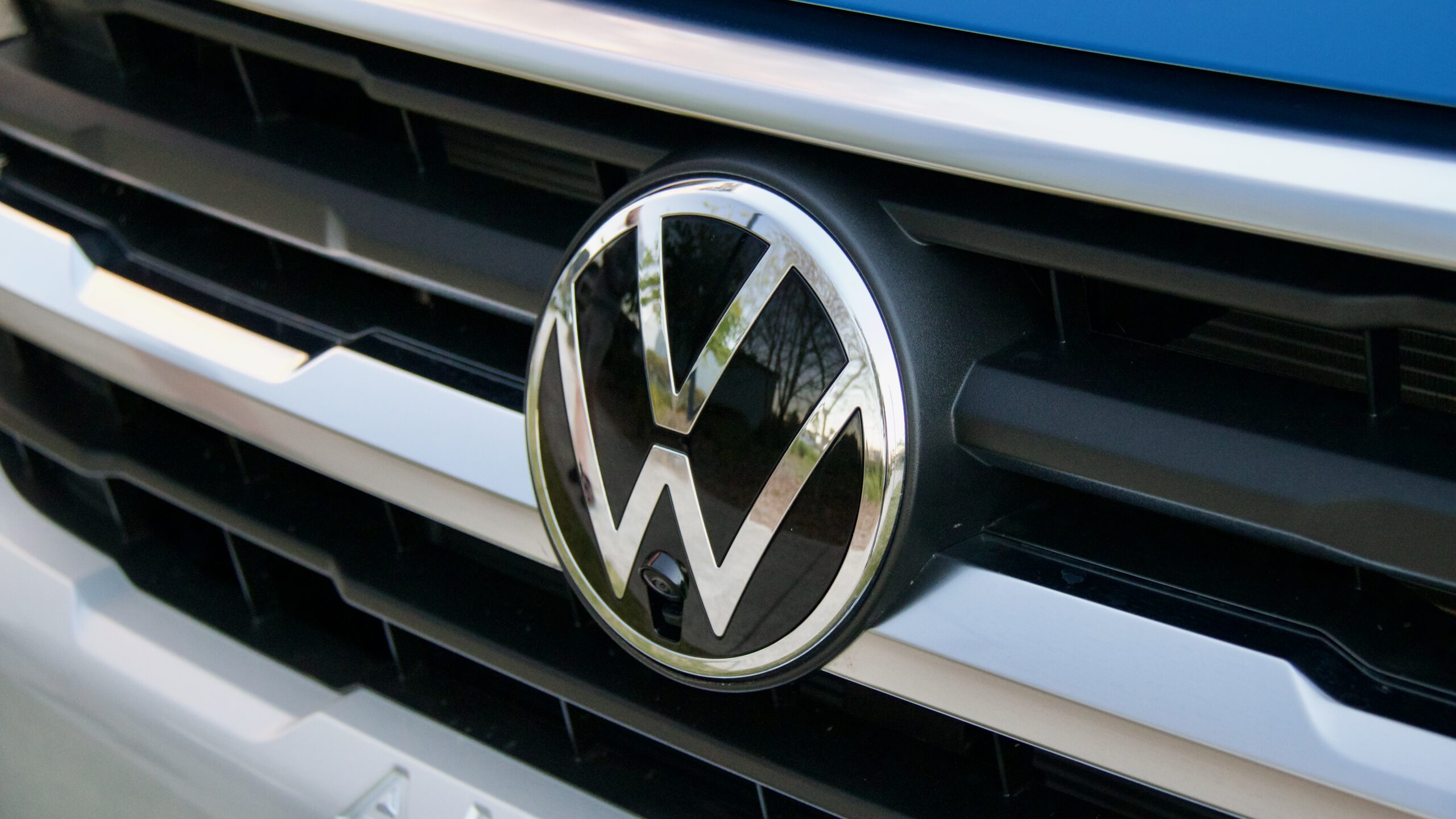
Both Ford and Mazda give the same warranty term with the Ranger and BT-50 and up to seven years of roadside assistance in total if serviced through Ford and five years upfront for the BT-50 respectively. Five years or 75,000km of servicing the Ranger costs slightly less than the Amarok at $1,726 ($345 per service), while doing the same for the BT-50 costs a lot more at $2,443 ($488 per service).
The 2023 Volkswagen Amarok Aventura TSI452 DiscoverAuto Rating: 8.5/10
It’s difficult not to be impressed by the 2023 Volkswagen Amarok Aventura TSI452. It’s largely taken the classiness and driving dynamics from the old Amarok and combined them with the new Ranger’s mechanicals and all-round ability. To our eyes, the Amarok looks better than the Ranger, while its cabin is higher quality, wait times are likely to be shorter than for the Ford and its service pricing is quite affordable as well – certainly much cheaper than a BT-50, for example. It’s also pretty good to drive, quite refined, well equipped and its in-car tech is well integrated.
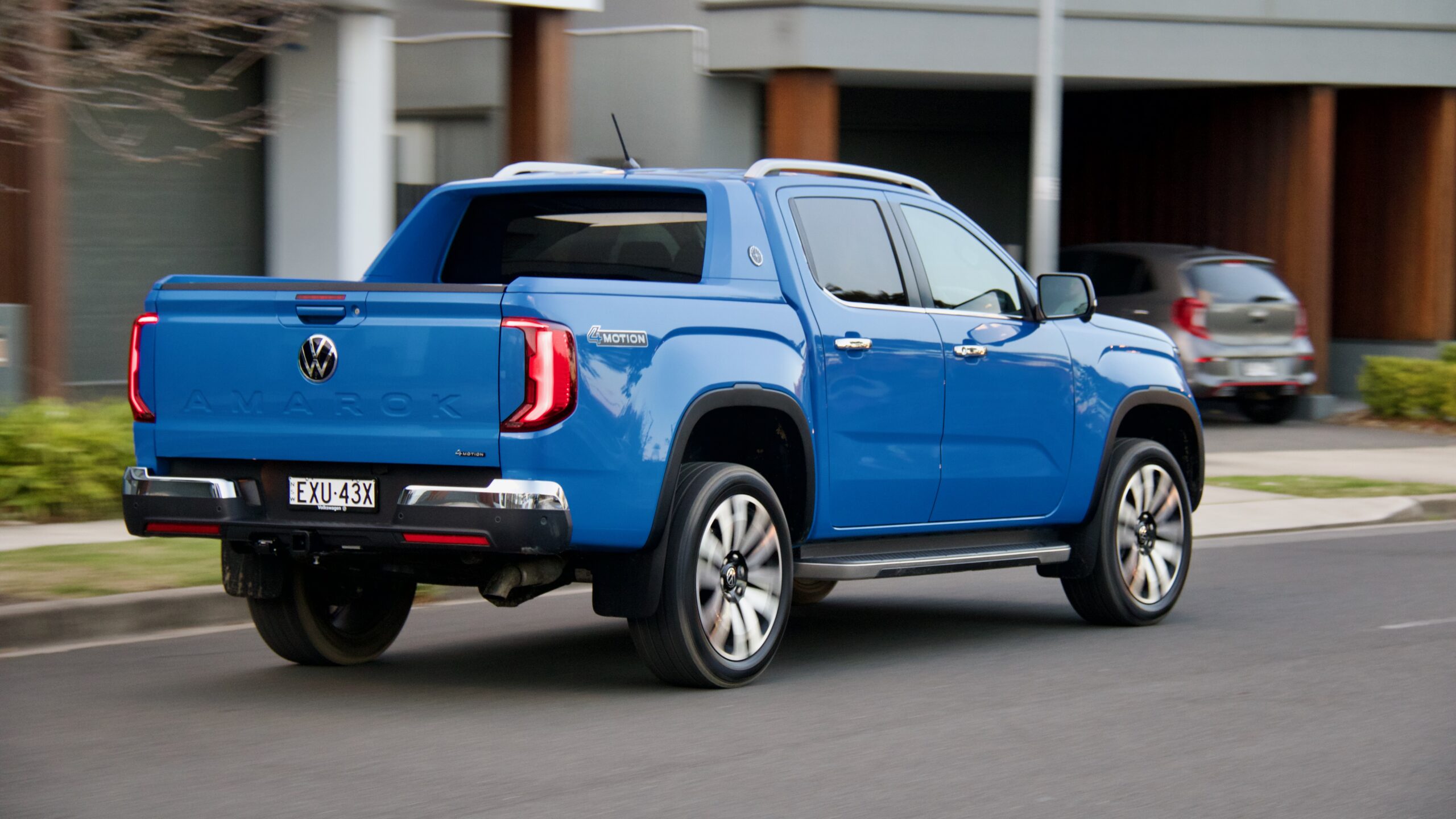
So which is best: Ranger or Amarok? We think that’s up to personal preference and how they’ll be used by customers but they’re both excellent – if you’re larger figured, you may like the Ranger’s seats more than the Amarok’s, while the Ford is more comfortable with larger bumps, it’s slightly better value for money and offers live services functionality. But regardless, it’s clear that the Amarok deserves a deep dive look if you’re after a ute. It’s definitely more than a just VW-badged Ranger too, and like the old Amarok, its all-round ability is excellent or exactly what you’d expect from a Volkswagen.
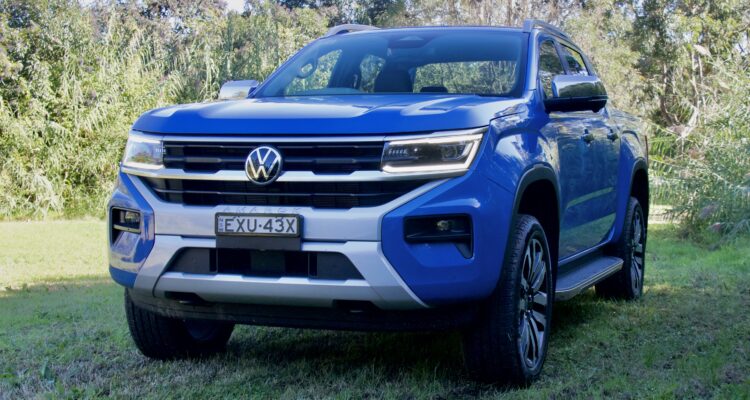
Leave a Reply